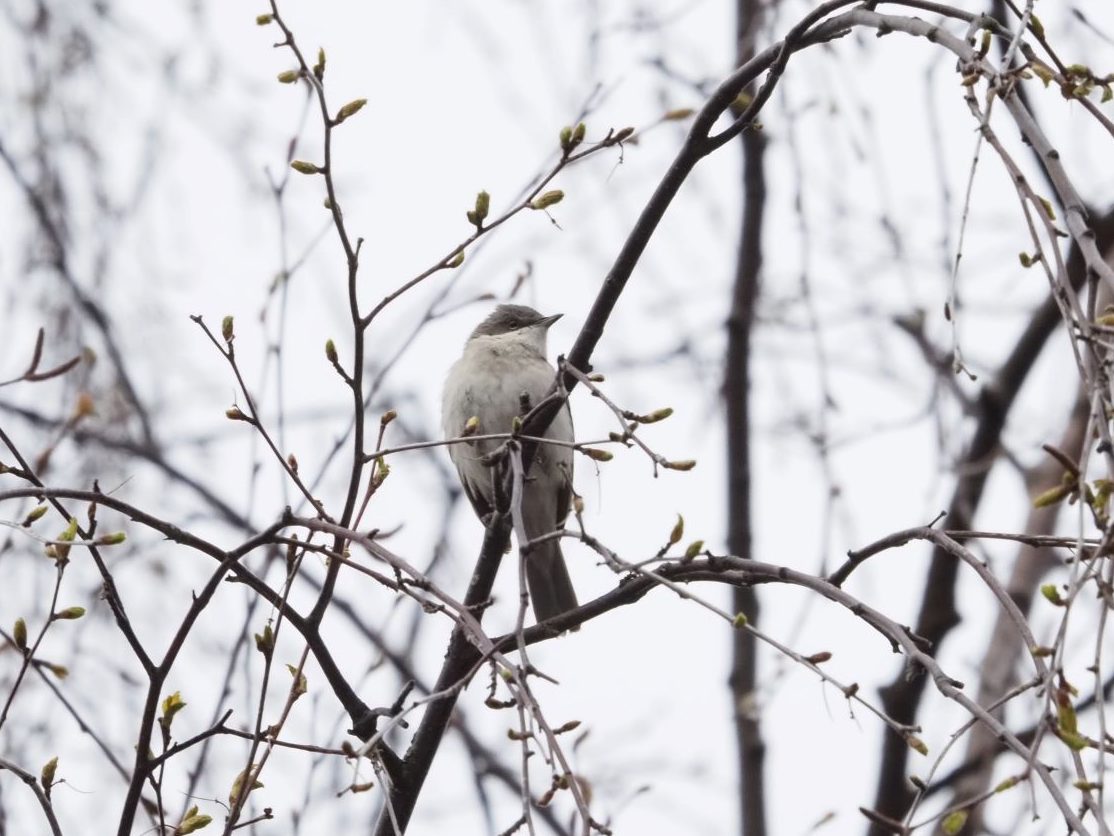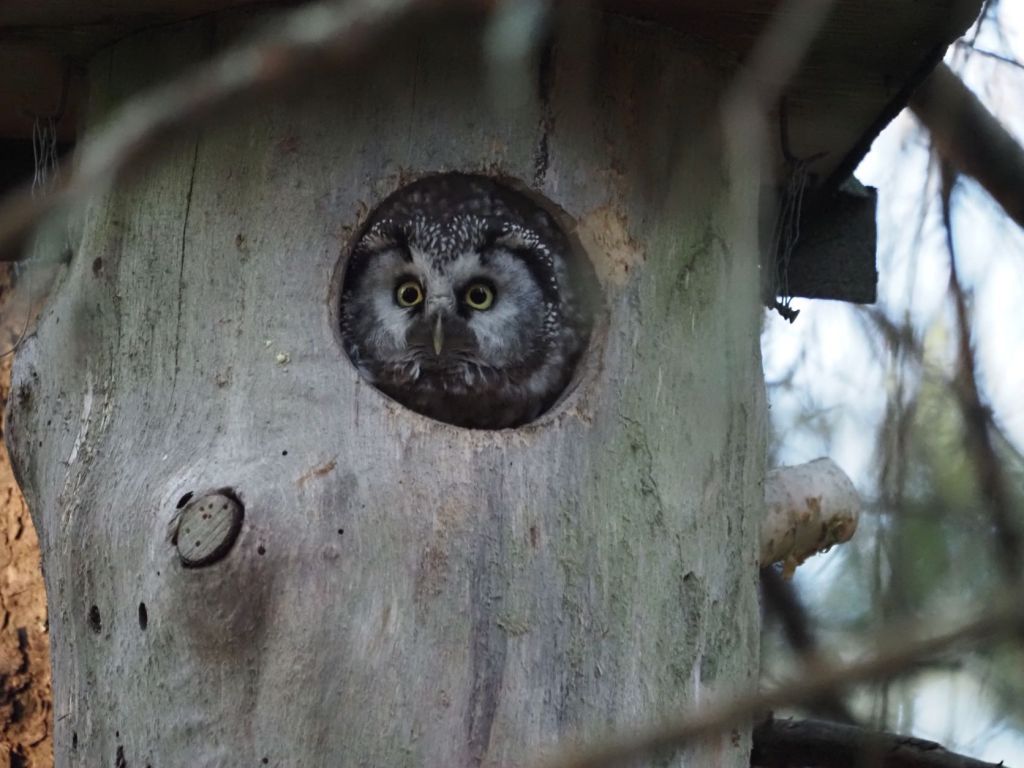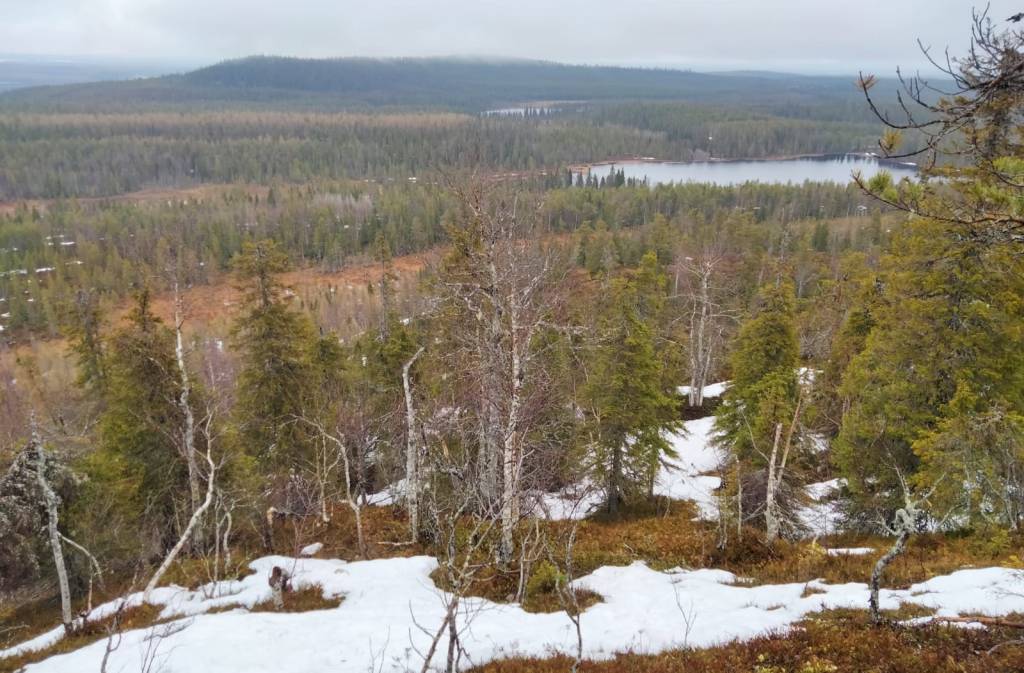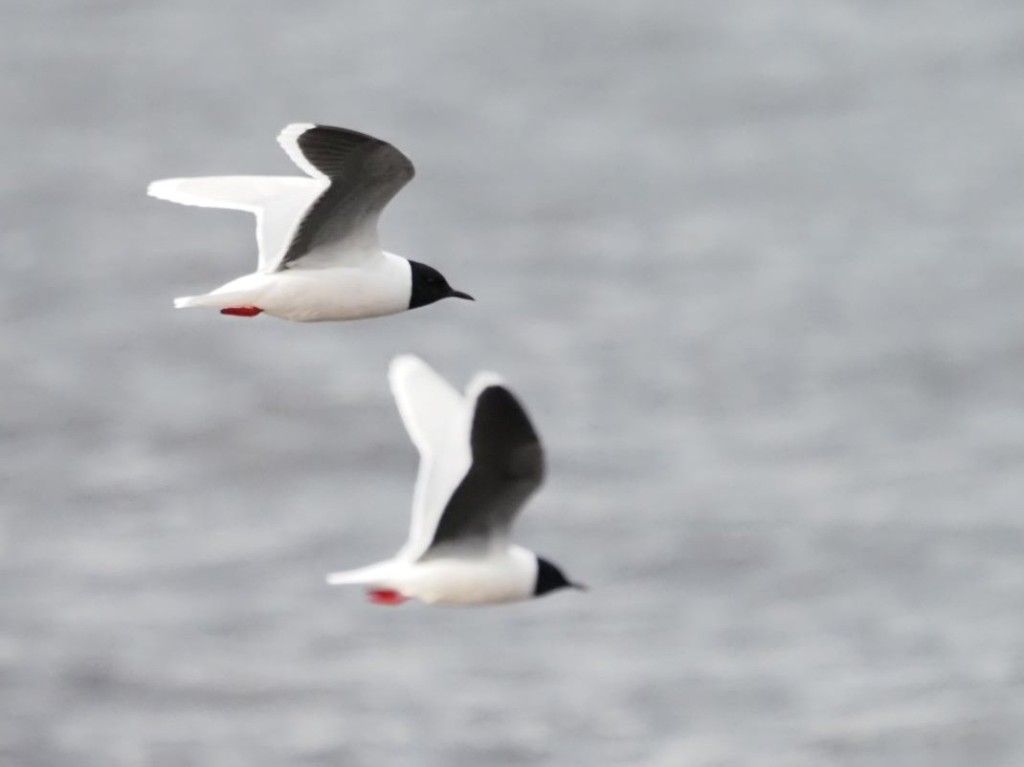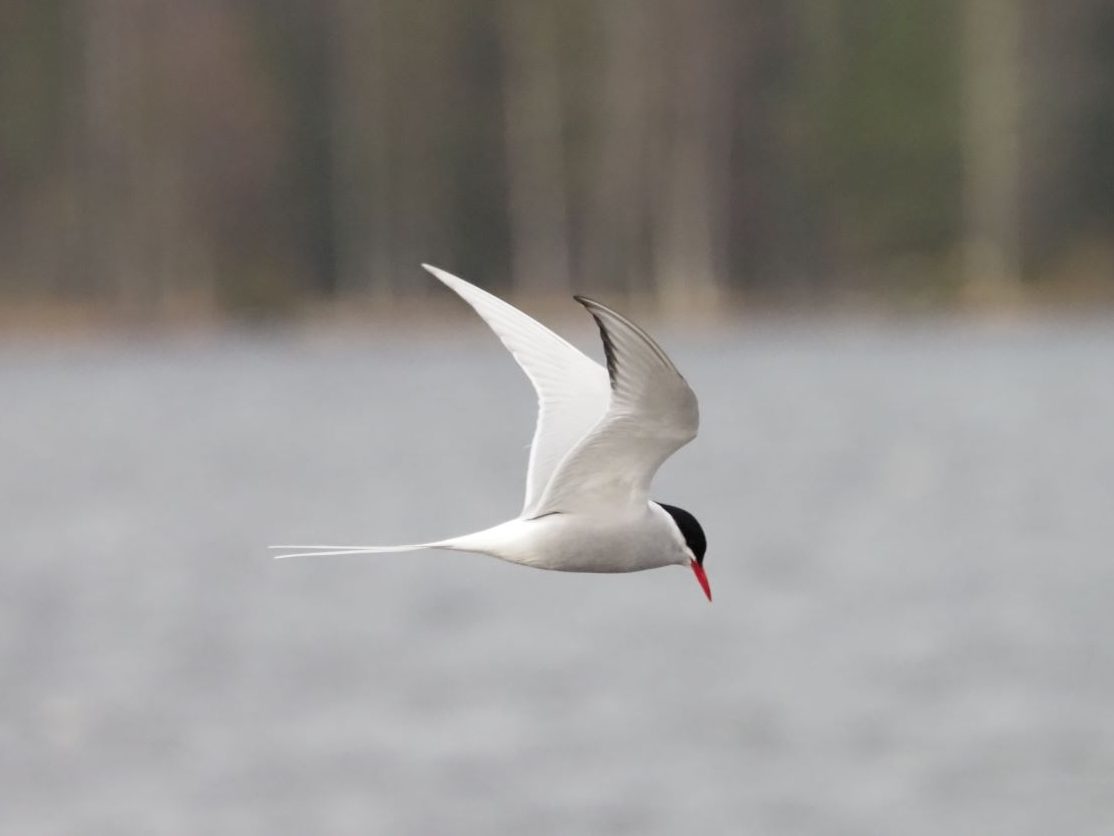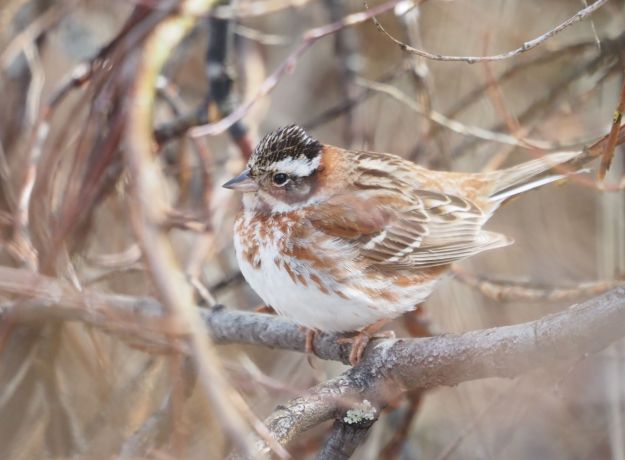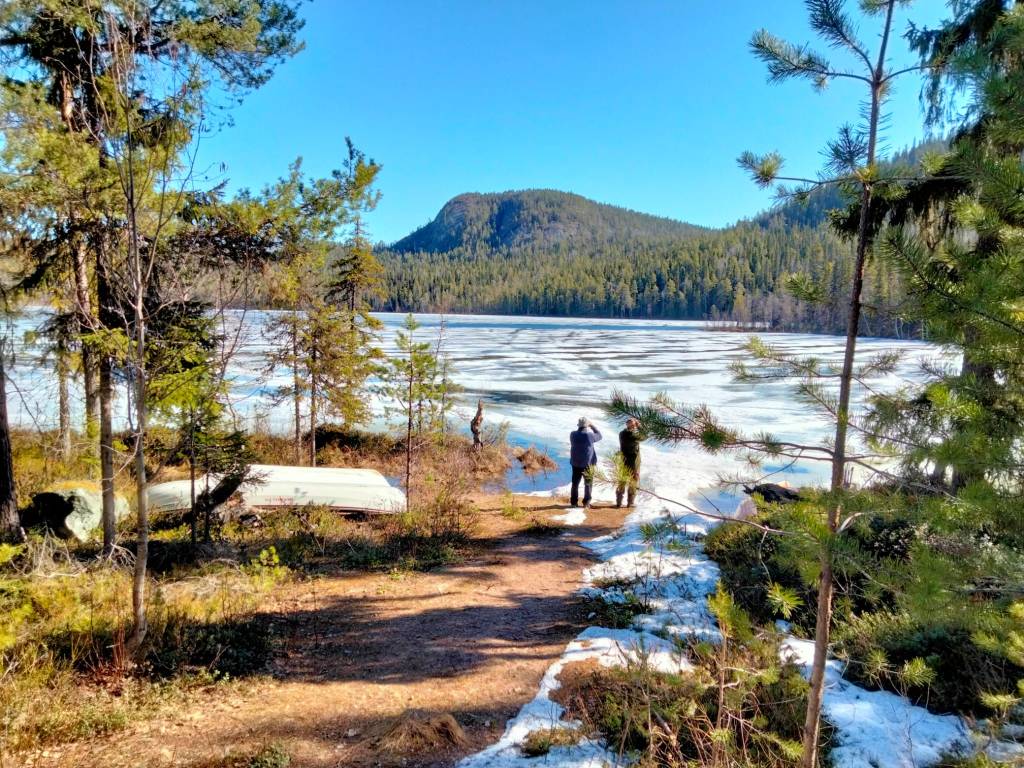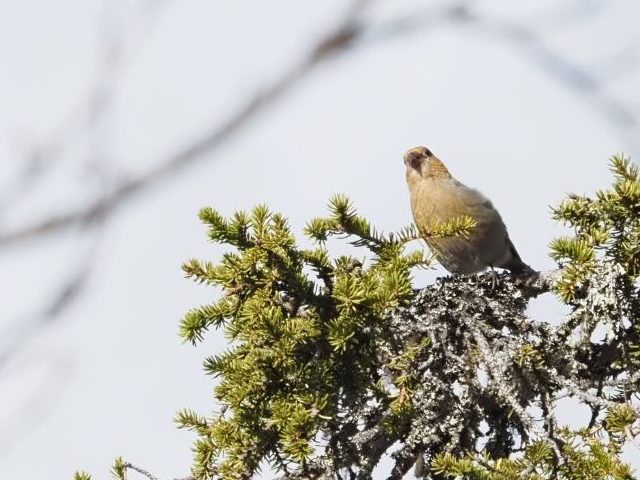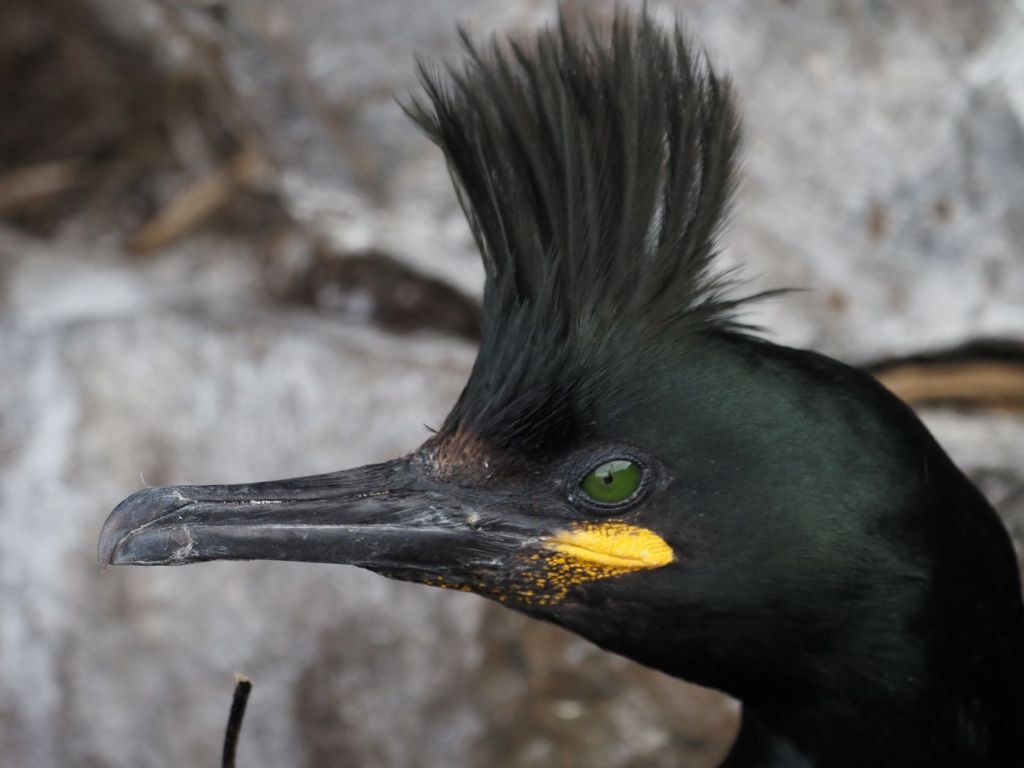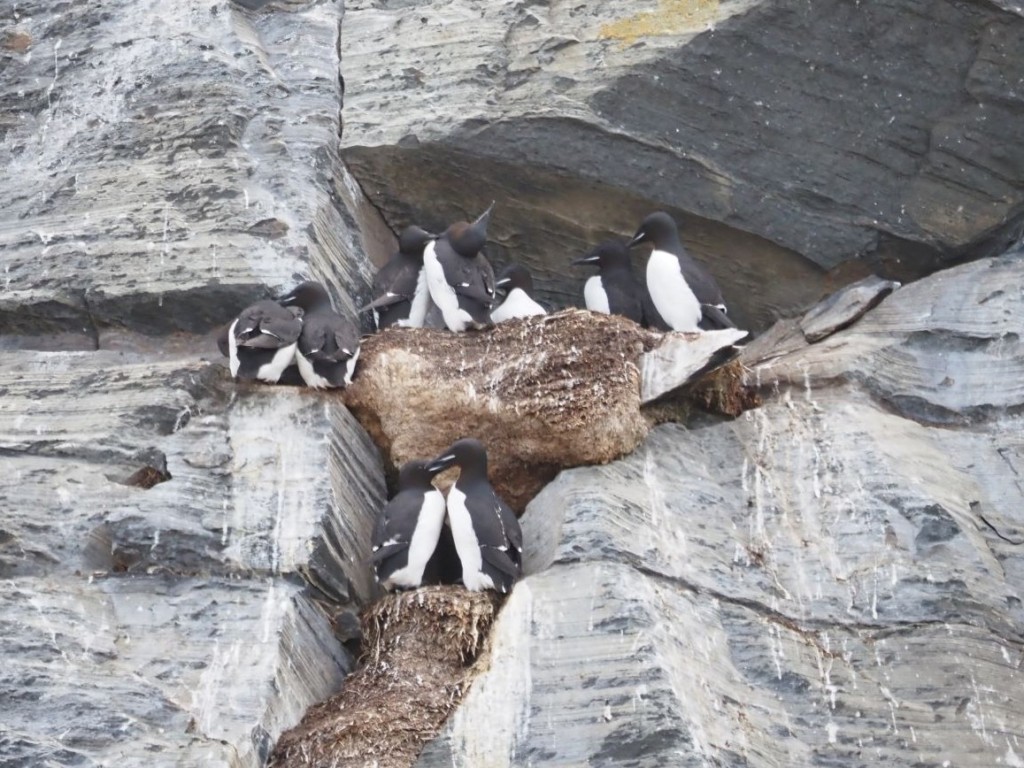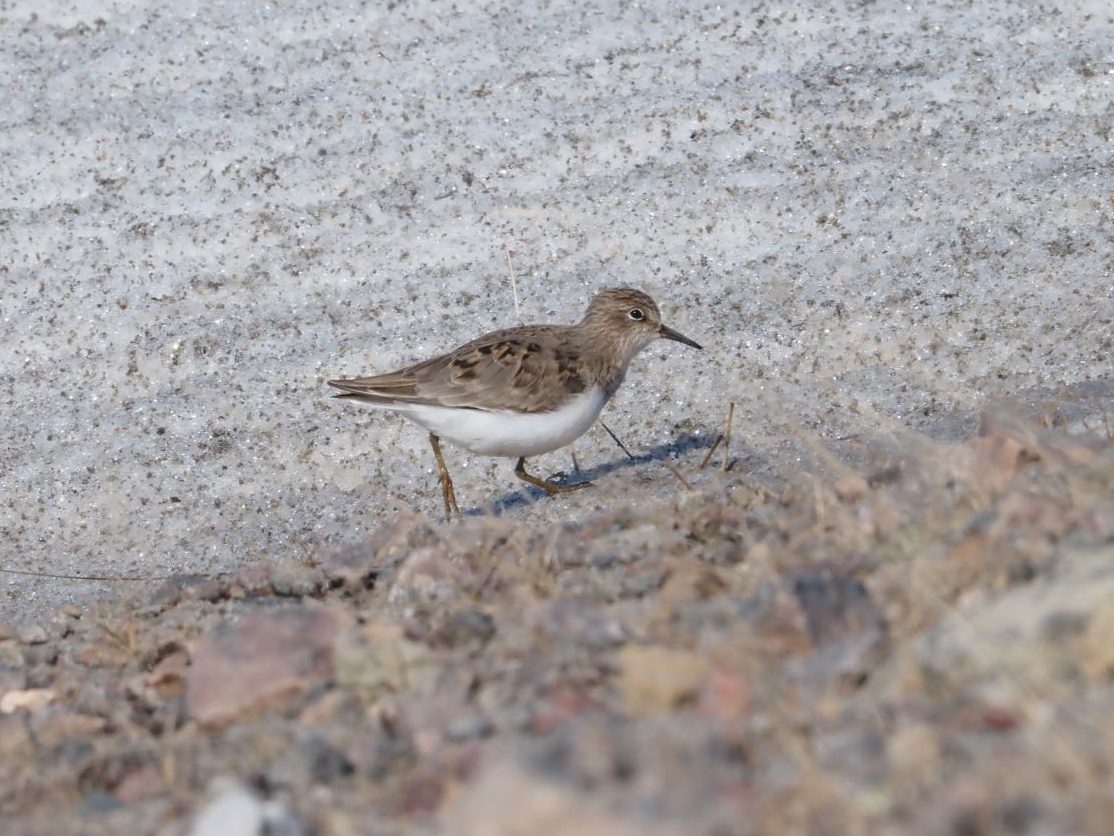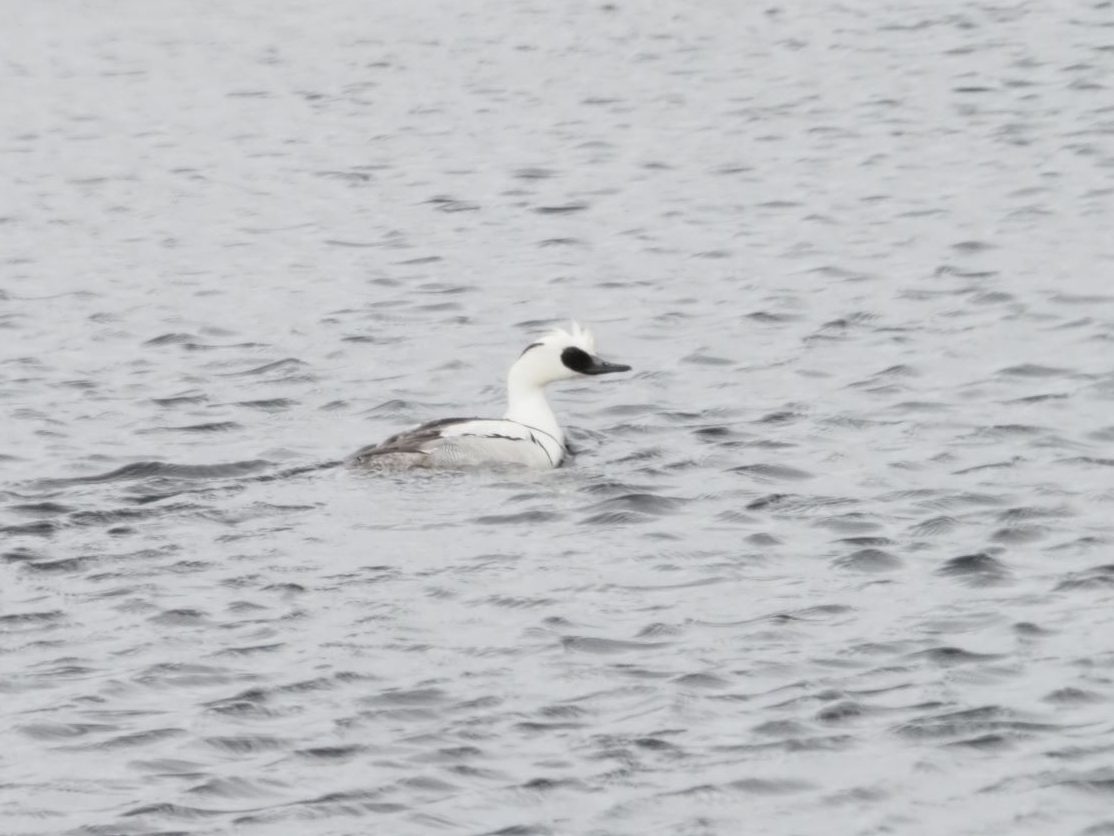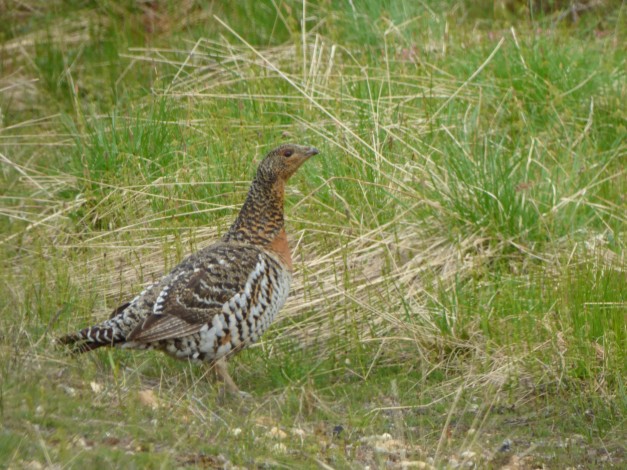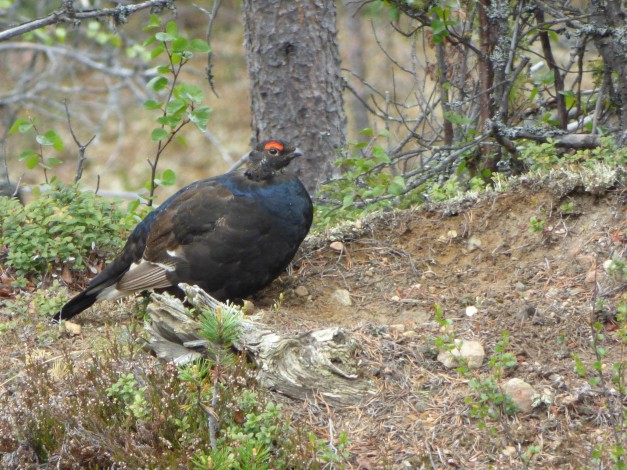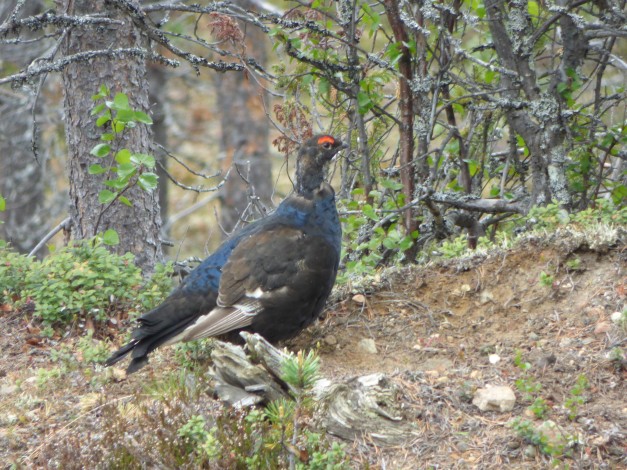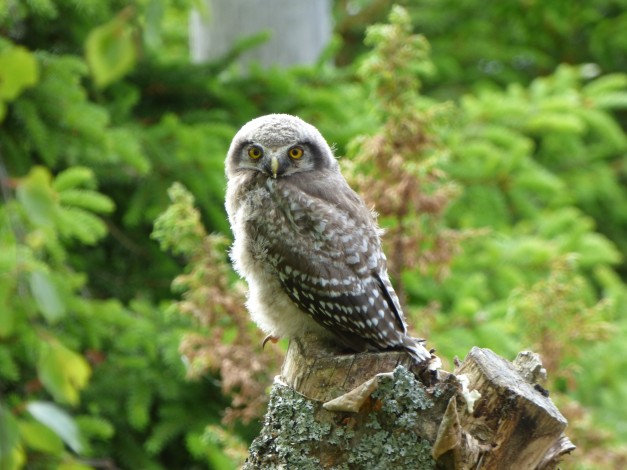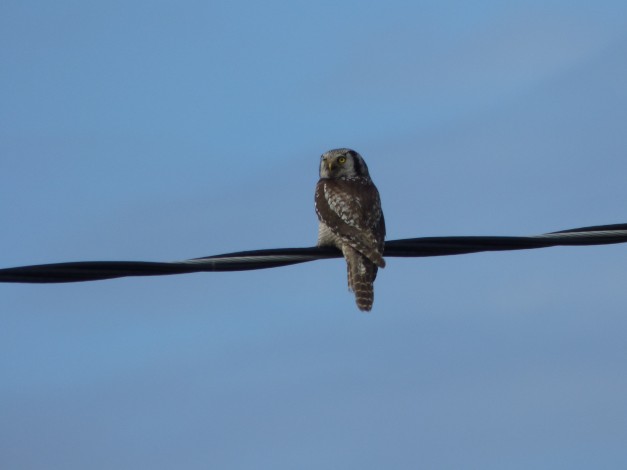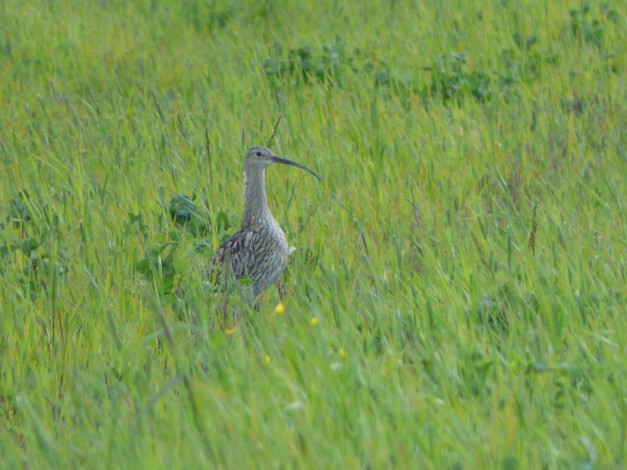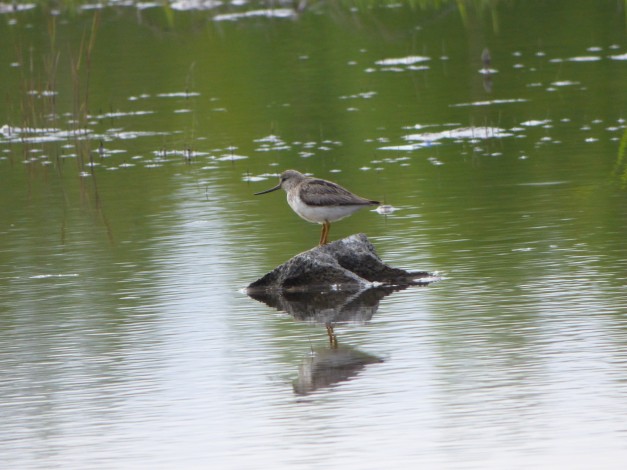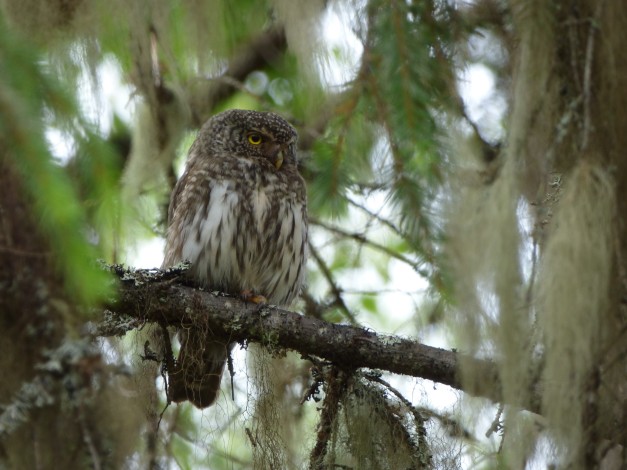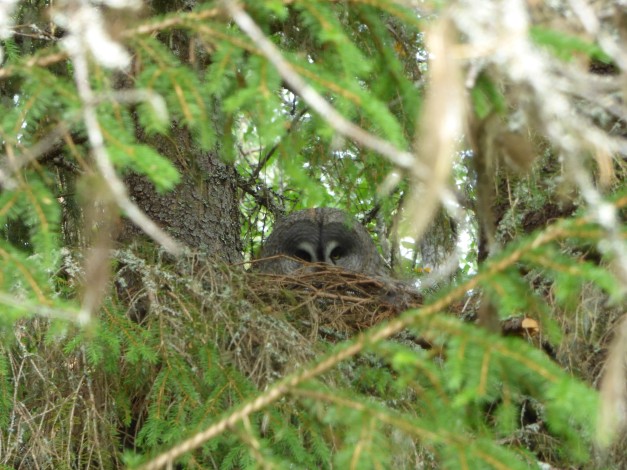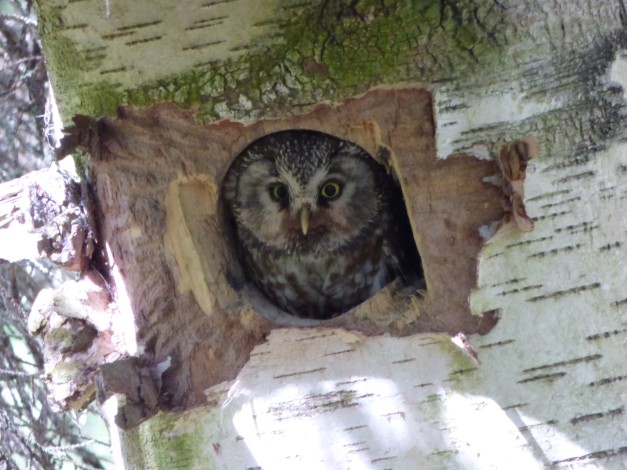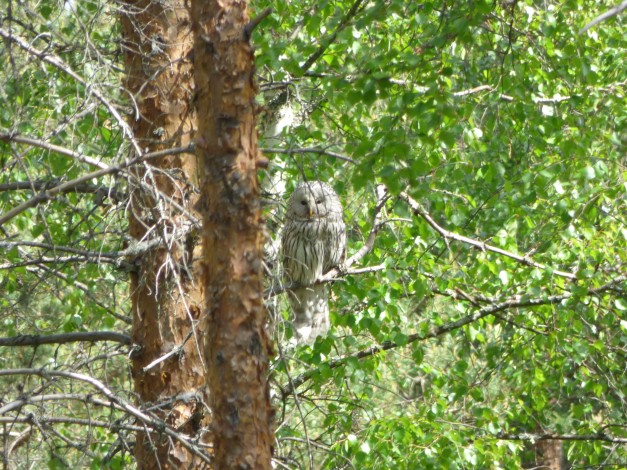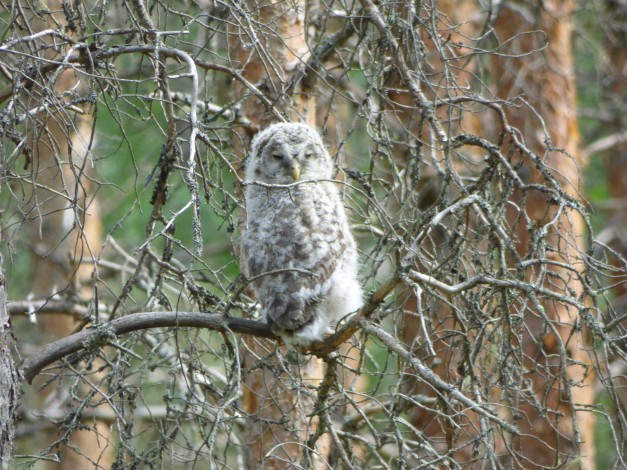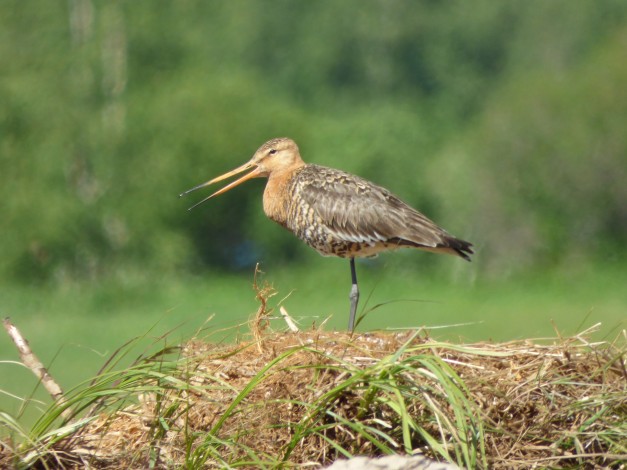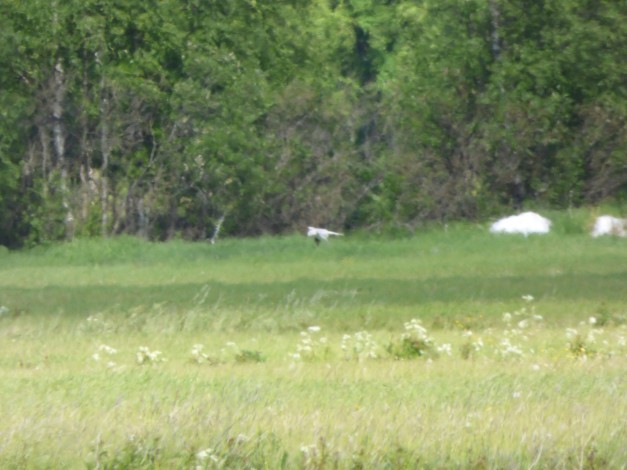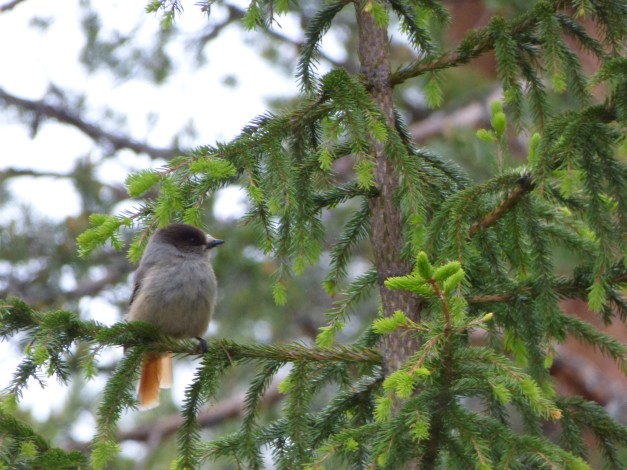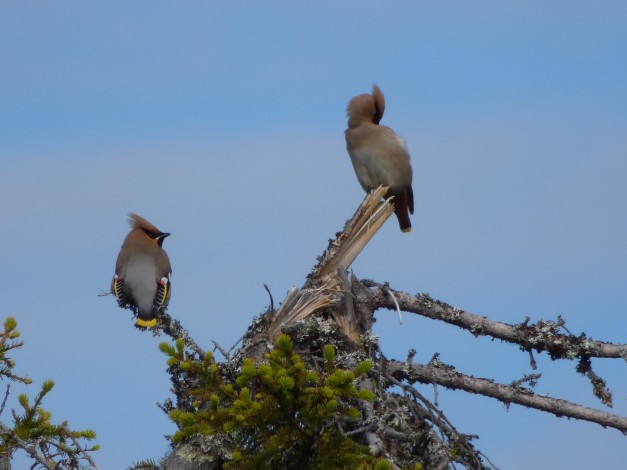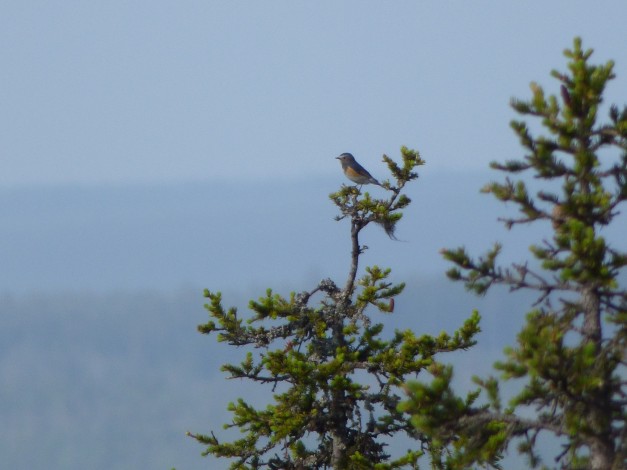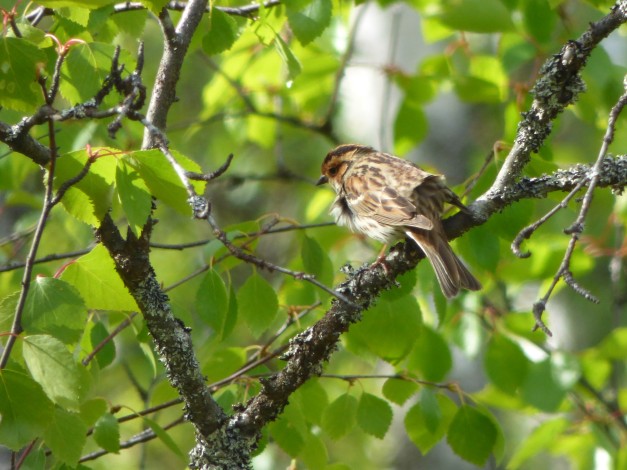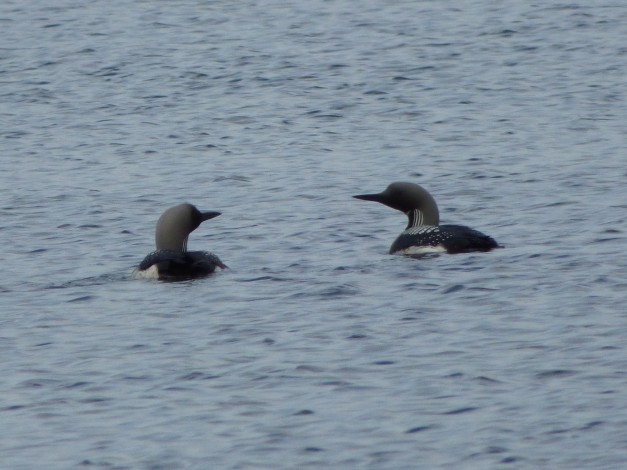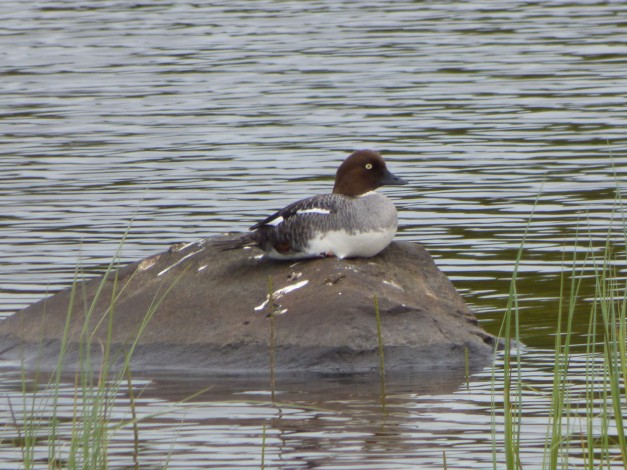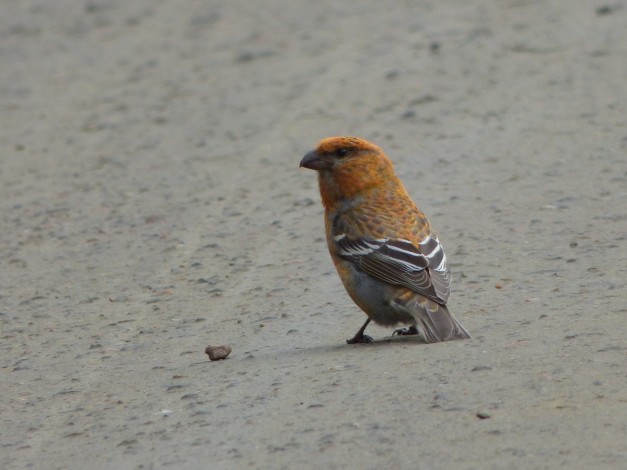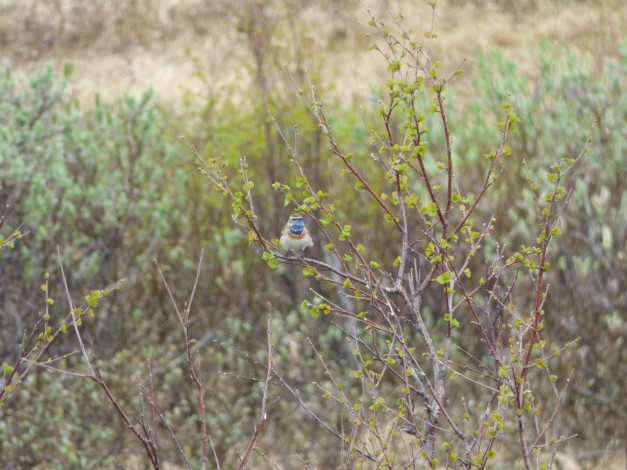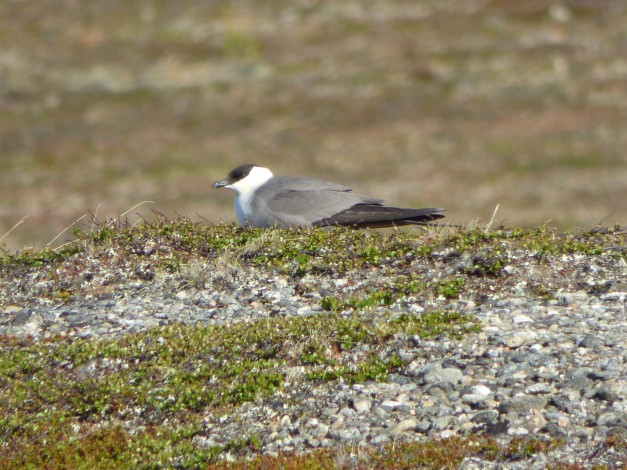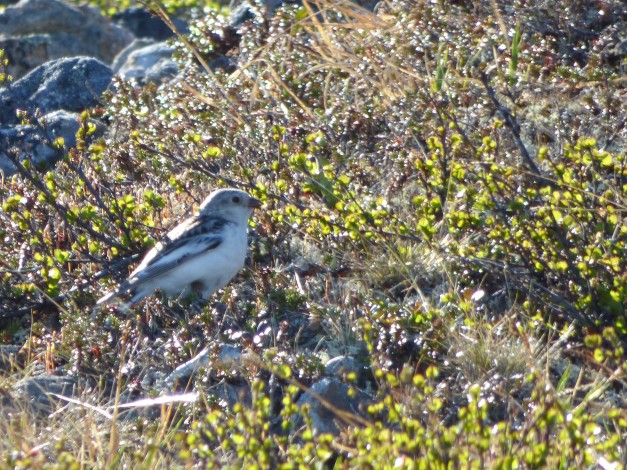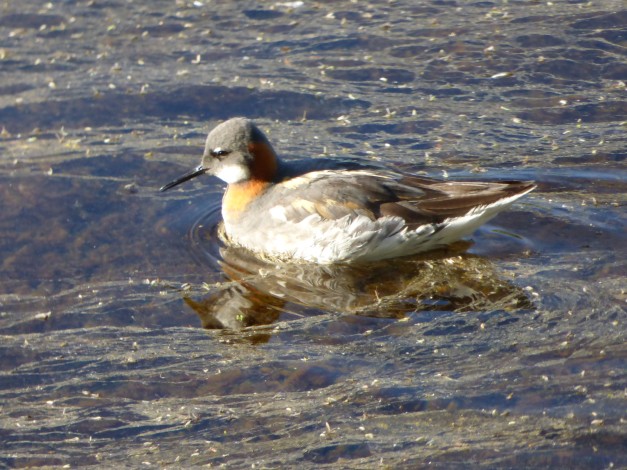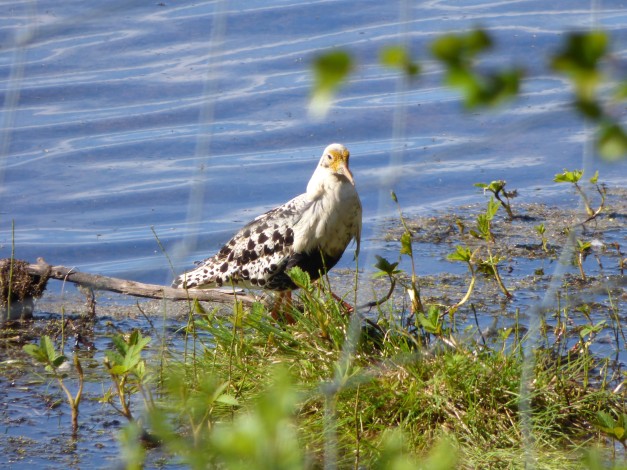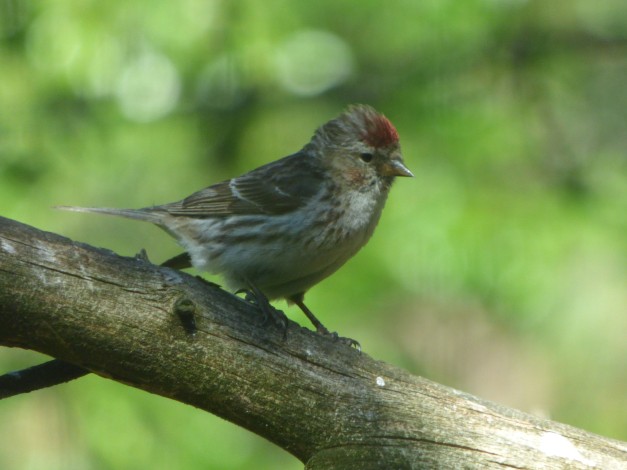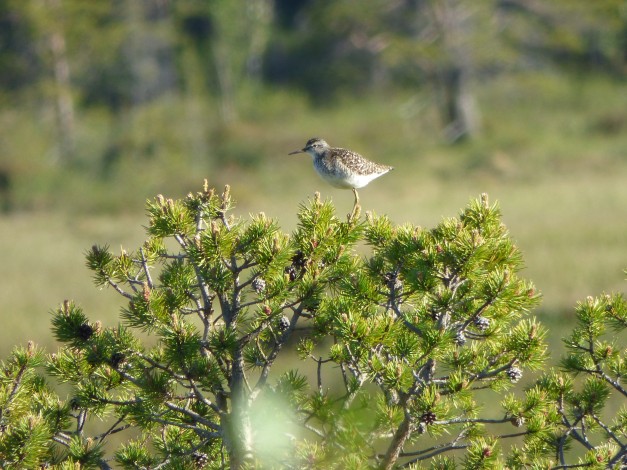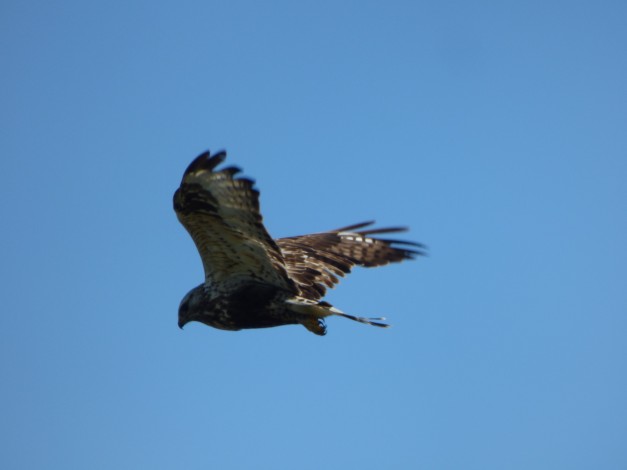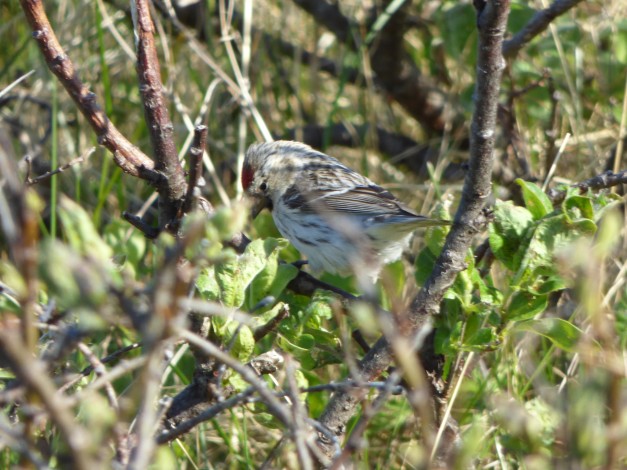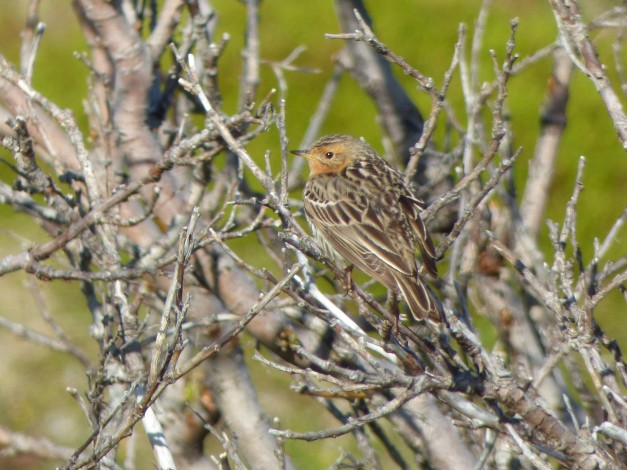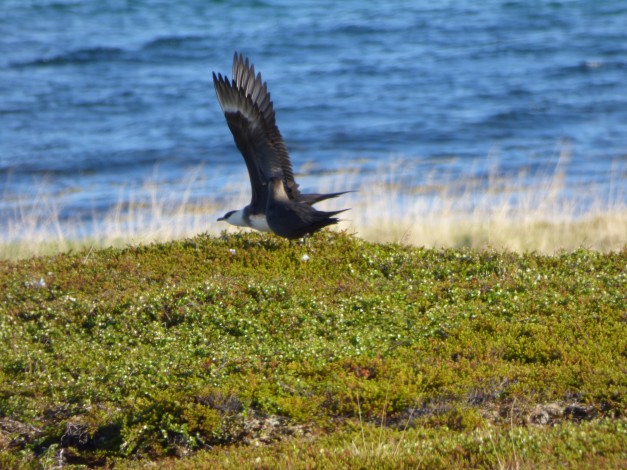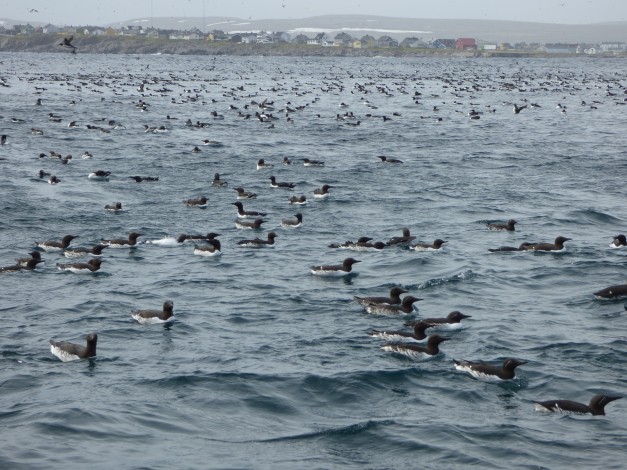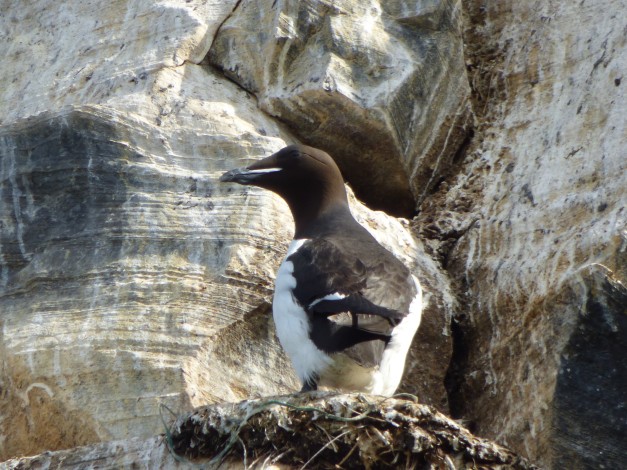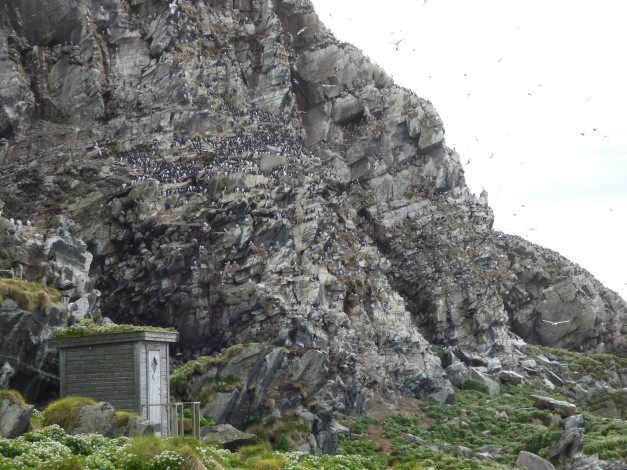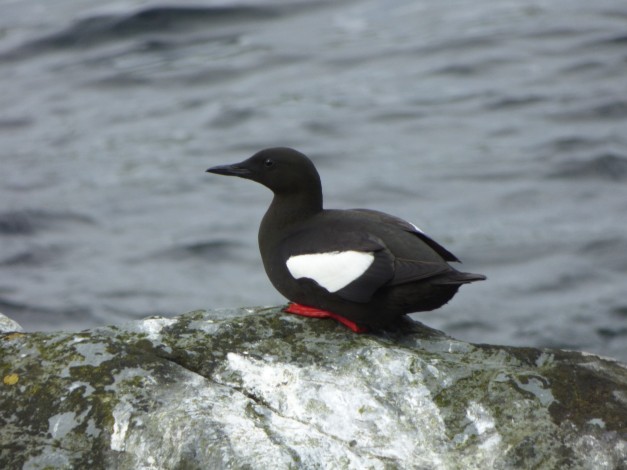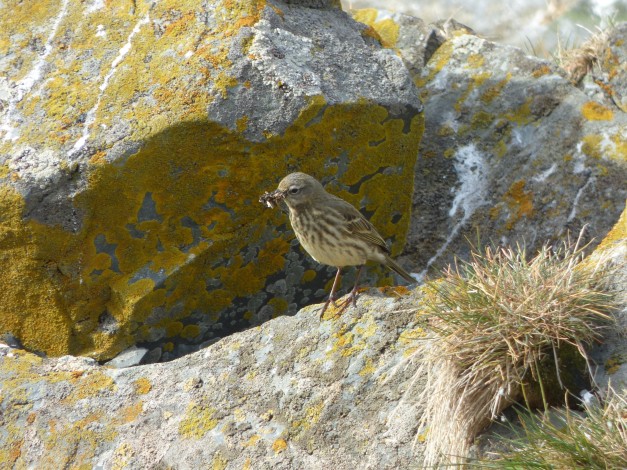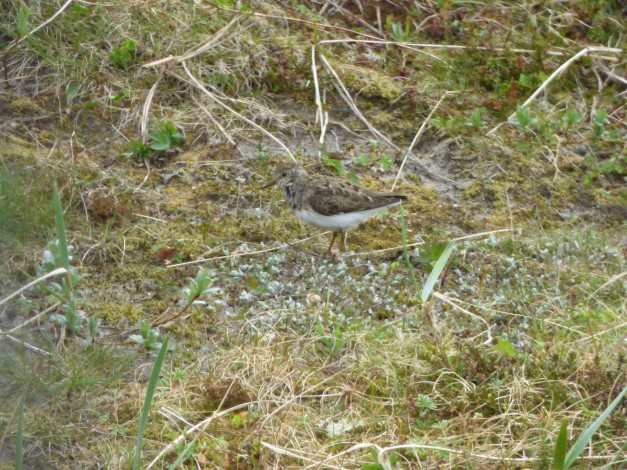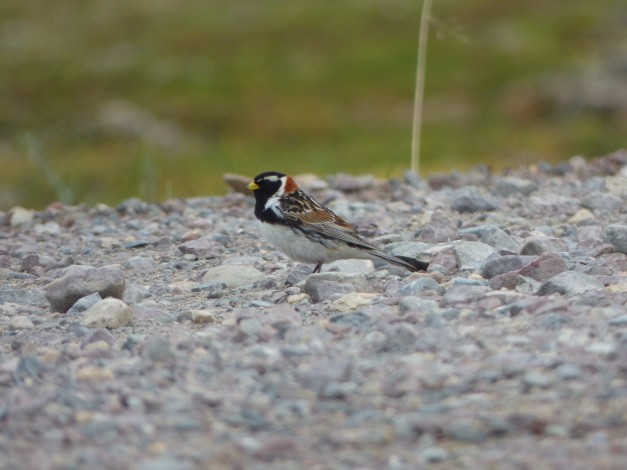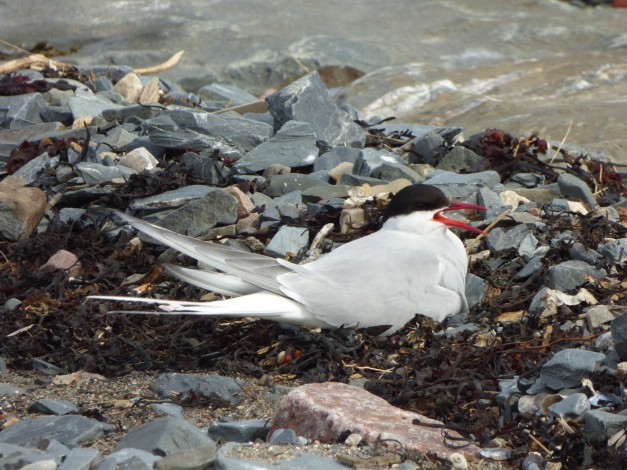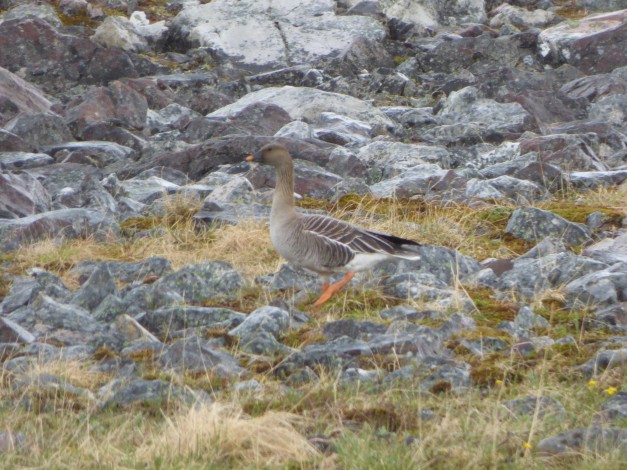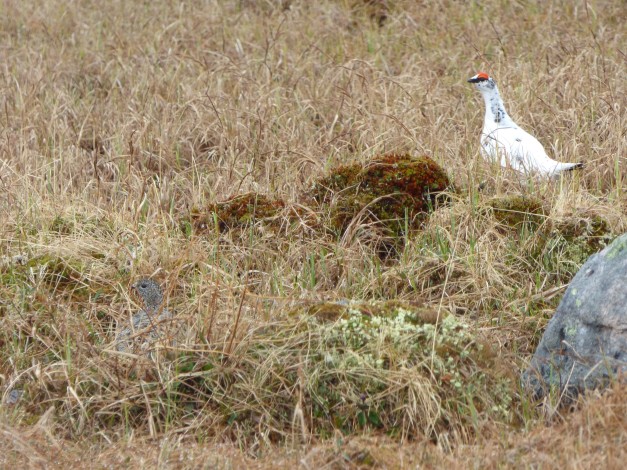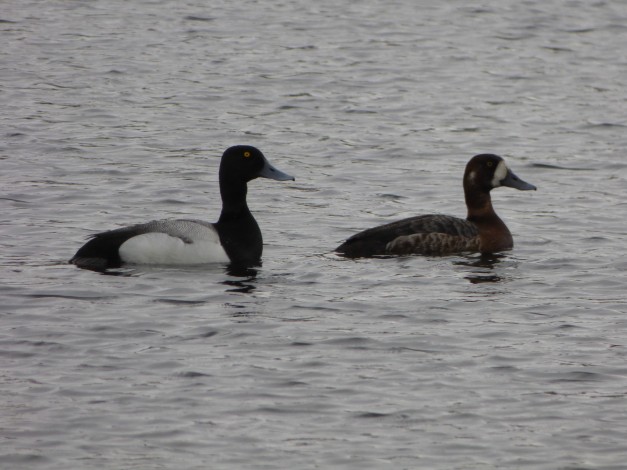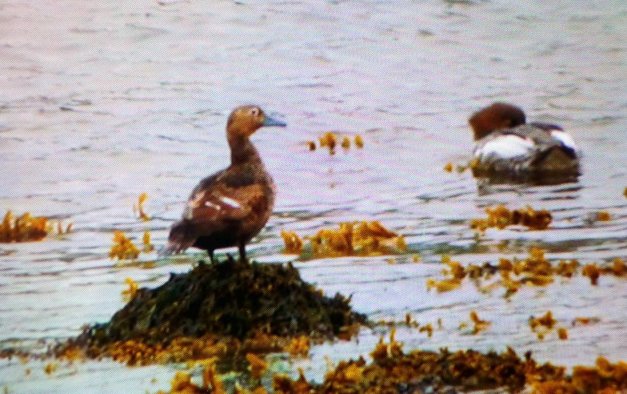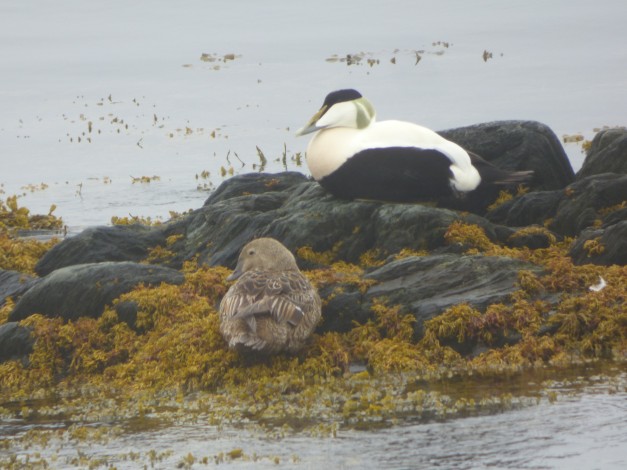Dates: From May 23rd to June 1st, 2023
Number of participants: 5
Number of bird species: 177
All images in this trip report taken by: Carmine Grasso, Mark Harper & Mark Newsome (tour participants), and Carles Oliver (tour leader). All rights reserved
Overview: Our 6th tour exploring Northern Finland and Norway (Finnmark) has been one of the best so far. We enjoyed mild weather all trip long, with a single day of rain. Again, we did very in Owls and Grouses, enjoying all 5 possible species of grouses with multiple views on all of them, and 5 species of Owls plus lovely views in rather scarce species including Gyrfalcon, White-billed Diver, Three-toed Woodpecker, Steller’s Eider and Rustic Bunting. Again, the number of Redpolls and Waxwings in the boreal forest was limited, but the numbers of waders and ducks was excellent all along the tour. Once again, it has a lovely experience in the untouched landscapes of the European North Pole. We are already looking for our 2024 issue, starting on May 31st!
Day 1. This day has been basically a travel day, with little birding. Still, some of the tour participants had the time to explore the marshes around our accommodation in Oulu and got very interesting sights including Little Tern, Temmincks Stints, the first Short-eared Owl of the trip and a flock of 10 Broad-billed Sandpipers among other goodies!
Day 2. First of a row of very early starts, this time devoted to explore a number of spots around Oulu. The morning was sunny and without any wind. Even before leaving the accommodation we had views on Common Rosefinch, Reed Bunting and Common Redstart. In our first stop we had a short walk in nice spruce forest. Bird activity was low but we still got the first Black Grouse of the trip that flew off from under our feet, good flocks of Common Crossbills and the only one European Crested Tit of the trip.



From here we got a widely known place for Terek’s Sandpiper, but we were not lucky about it and didn’t have anything beyond Common Rosefinch, Arctic Terns, Goldeneyes, a distant calling Little Ringed Plover and a running Stout.
After a coffee break we headed into a different spruce spot around Oulu. Here we were more lucky, and we had a Black Woodpecker flying in front the van just when arriving to the place. A Grey-headed Woodpecker was calling around and we took our chance to have nice views on a bird that was a bit beyond its normal nesting range. The Woodpecker was quietly sitting on the top of a dead tree allowing good and long views to everyone in the group. But after a pair of minutes latter a Hazel Grouse called from inside of one of the spruce pockets around us, so we fastly moved to the place to try to connect with it. It took us some time, as the bird kept moving up and down inside the forest, providing us with good flight views but never conceded a proper perched view.
Beyond this woodlands it is an extensive patch of farmland. Here we had the first Whinchats of the trip along with Skylarks, Eurasian Hobby, Ring-necked Pheasant, Marsh Harriers and a pair of Hen Harriers that were nicely soaring above the fields, searching for boles.
After midday break to recover a bit from the early morning, we did visit a small pond where a pair of Slavonian Grebes where nesting. Here we had intimate views on them before going for a short walk to one of bird towers around Limintahari. Unfortunately it was windy, but still we got a pretty list of birds that included 4+ White-tailed Eagles, several Mute & Whooper Swans, the firsts Little Gulls of the trip, 3 Baltic Gulls, 2 Caspian Terns, 1 Herring Gull and several flocks of ducks that include Garganeys, Teals, Eurasian Wigeon, Goldeneye, Tufted Ducks and Greylag Geese. Distant flocks of Common Cranes were moving up and down while some Sedge Warblers and Reed Buntings were seen singing despite the wind. In the parking place, a pair of Pied Flycatchers were nesting in a nest box. Wader activity was low due to wind, but still got distant views on lekking Ruffs, Common Greenshanks, some Dunlins and Common Snipes.


Day 3. As usual in Finland, it was nice to see a fast change in the weather from the previous day. Our morning developed in a rainy ambient, with temperatures ranking between 8ºC and 12 ºC. During the morning, the main target was to contact with a number of owl species. Our first stop was devoted to check a nest box for Tengmalm’s Owl, and after a short wait we had the female coming out from the hole and showing for some minutes and it was checking that everything was okay around its nest place. From here we moved some miles away, as a next box for Ural Owl was occupied at the moment. Once arrived we were surprised by the first Spotted Flycatcher of the trip, as well as a Coal Tit that was calling around, even if never showed out. We were in a lovely clearing of the forest, and everybody enjoyed great scope views on the Ural Owl inside its nest.
The rain gave us a break, and we moved into a different location. A lovely mature spruce forest was hosting a pair of Eurasian Pygmy Owl. We already tried a place the previous day, with no luck. And this trial had a similar end. Yes, we had one of the birds shortly replaying from up in one of the spruces but, despite our efforts, we were uncapable to bring this bird into sight. It was time for a breakfast break. Around us, Northern Bullfinches were calling and feeding, and that morning we had several sights on them, as many Bullfinches were coming to the dart roads, presumably to swallow some dart. Also in teh dart roads, we had a good number of Eurasian Woodcocks flying off, with a pair of birds standing up for some seconds and allowing short but solid views. We did a short stop in a farming area, not far from the place where we were the day before, and we fastly connected with 3 Ortolan Buntings singing and calling around us. Whinchat, Eurasian Curlew and Yellowhammer were also noted around.
The weather was clearly improving as the day went on so we came back to the forests, leaving the open lands behind. The first Brambling of the trip was seen just by the van, and the only 3 Taiga Bean Geese of the trip flew above us at the moment to get inside a small patch of forest where a gorgeous female Great Grey Owl was sitting on its nest. The Great Grey Owl is not only an impressive beast, but also the largest owl in this part of the world! After several minutes enjoying the bird, we decided to take a look. The male could not be far away, guarding from any potential risk the nest and his partner. And we were sucessful in finding the male, that was about 50 metres away from the nest, up in a dense pine. Again, the group enjoyed amazing scope views and, despite the rather windy weather, the camera men in the group had a wonderful quest to capture the spirit of such an impressive beast. Here we also had Eurasian Treecreeper and the very common Willow Warblers and Goldcrests.




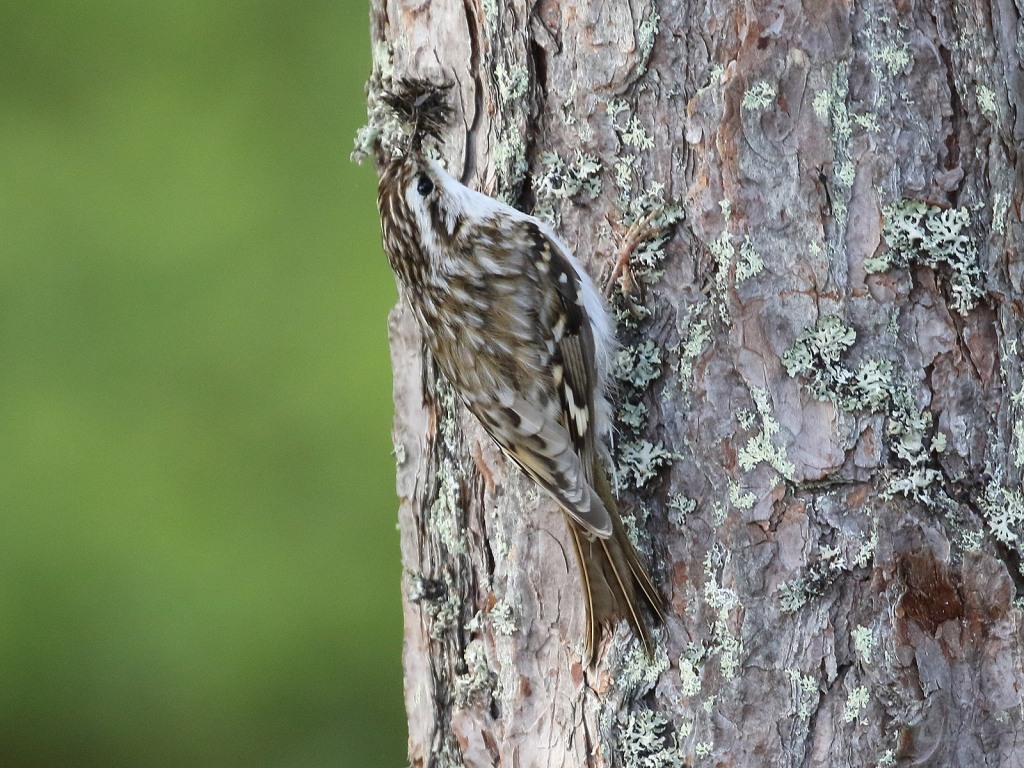

After a pair of minor stops we went for a lunch stop, we hit the road in the direction of Kuusamo. A pair of stops in the way were mandatory as small flocks of Little Gulls were seen quite close, moving along with the nesting Black-headed Gulls. At mid afternoon we were already there, and we have time to explore a spot not far away from the town. Here the Mountain Hares were everywhere, but the area, an open land with small pockets of young willows, was only having Reed Buntings. When we were ready to leave, suddenly a tiny call came from the low branches of a willow, and a male Little Bunting showed up, singing a number of times from different branches. It followed a tiny peak of activity with a minimum of two males singing around and a putative female moving really low in the vegetation. We had to move a pair of times up and down in the track but at the end all the tour participants had excellent views on this little, wonderful patterned, birds.
From here we drove to the accommodation to have some rest and a bit of birding before dinner time, resulting in some Wood Sandpipers in the lake right beside our rooms, Common Cuckoo in the parking place, and Willow Warbler, Common Redstarts and the firsts House Martins of the trip as the most remarkable sights.




Day 4. A full day to enjoy the wonderful birding around the Kuusamo. Early am the weather was stable, but the wind started to blow after 9:00am, making birding a bit more difficult. Leaving our accommodatioin, we had the first Black Grouses of the day, as some females were seen feeding beside some minor tracks. From here we covered the short distance to a nice spot for Willow Grouse, and even before arriving we had to make a small detour as a male was seen in the top of a small rock inside a private garden. It was still a bit dark, but we didn’t miss the chance of some good shots in this wonderful and really tame male. During the next hour we had a minimum of 10 Black Grouses, all of them females, and a second Willow Grouse really close to the van. We crossed by some lakes, and some stops were mandatory to enjoy close views not only on Little Gulls and a drake Smew, but also on 5 Red-necked Grebes, Garganey and a wonderful Black-throated Diver at close range! The variety of ducks was remarkable, including Eurasian Teal, Pintail, Mallard, Tufted Duck, Common Goldeneye, Red-breasted Mergarser and Goosander.
In a different spot of the forest we had one of the typical stops, as a male Western Capercaillie was displaying in the track! Unfortunately, this time didn’t allow time for everybody to get out of the vehicle and take some shots, as the bird flew off inside the forest, followed by a female that was at the edge of the forest. We walked down the track slowly and we could hear the distant song of the Capercaillies, that unfortunately didn’t show again. Standing in this place, Mark had a song in the distance; a Rustic Bunting was singing in a small boj in the forest. We walked all the way down to the boj and carefully scanning around, but could not find any sign of the buntings. Back to the track, we suddenly had a bird calling around, and some seconds after this we had a wonderful male singing around us! The bird was really mobile but we enjoyed great views in this little cracker! Just when coming back to the minibus, 2 Parrot Crossbills flew over us at close range, offering half a second of good views on their large head and very powerful bills! Unfortunately they never stop, and kept their way above the canopy.



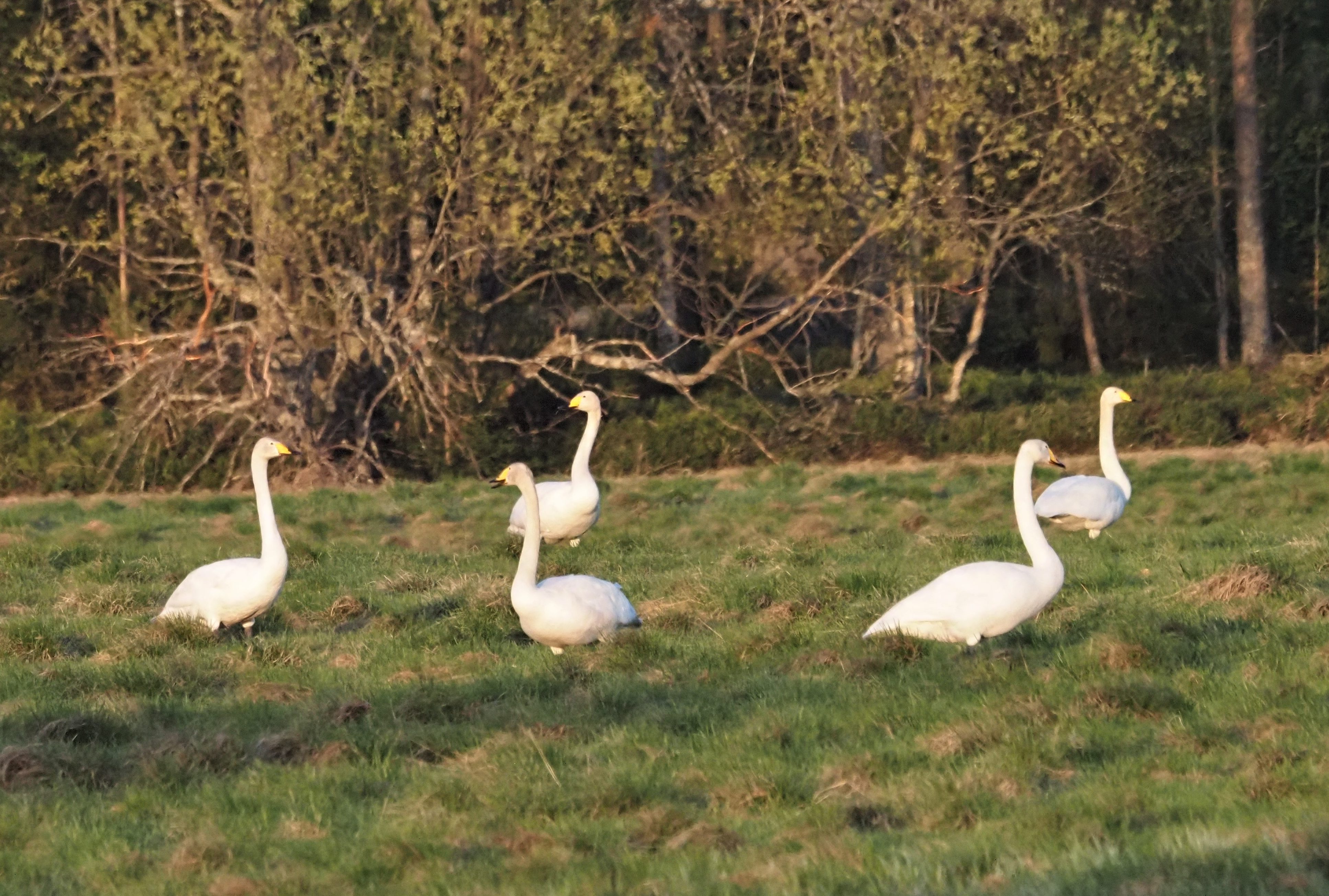

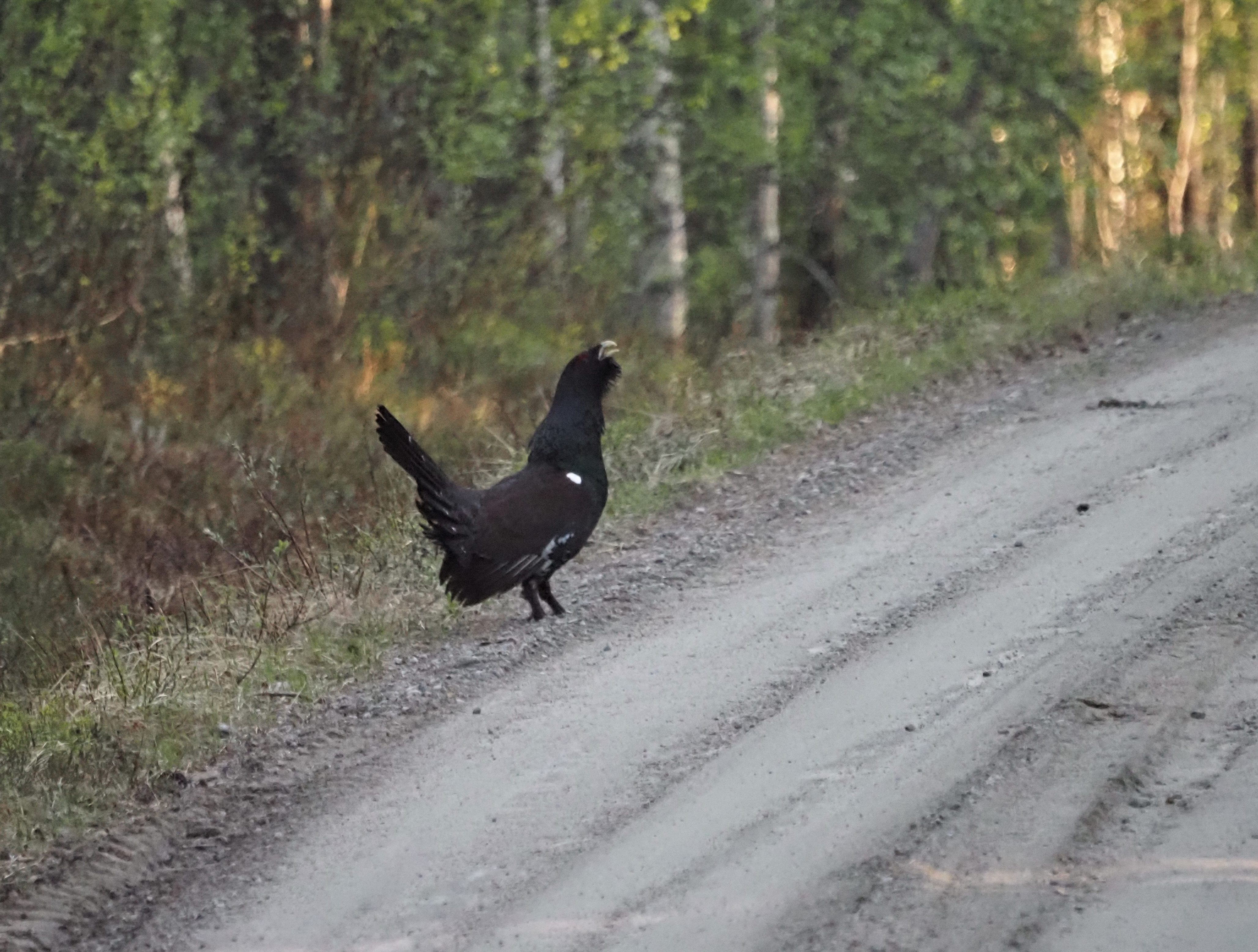

Back to the minibus we still had more Black Grouses and a pair of female Capercaillies in the road, offering of all them really good views. It was still early morning but we wanted to check a small spot only 10 miles away from the Russian border. There, large areas of dead, broken pines and willows offered an excellent habitat for another of the owls living in the region. We spent over half an hour in the place, but we didn’t get anything beyond Redwings, Tree Pipits, Mealy Redpolls and Whinchats. Finally we decided to move on, and when we were leaving our efforts were greatly granted: a wonderful Northern Hawk Owl was sitting next to the road, in the highest part of a tall willow! We took our chance, park besides and we all enjoyed long views on this wonderful bird while was overwatching its hunting area. A Fieldfare was trying to moob the owl, but the only that got was the owl to open its wings a pair of times, allowing us to see a good detail on the wing design. After nearly 15 minutes enjoying the bird from the road, the Hawk Owl decided to leave the place, flying away and crossing the open land nearby.
Extremelly happy after this extemelly nice sight, we move to Livaara, a wonderful hill that oversees the extensive forests around Kuusamo. But we still had to do another stop in way, since Mark (yes, it was more than one Mark in the tour) found a Hazel Grouse nicely posing beside the road!! From inside the van, we all had incredible views, with the lovely morning sun illuminating the game bird. As it moved, a female appeared beside the male, and both male and female moved for a pair of minutes before getting away, back inside the boreal forest. Very happy after this, we covered the short distance to Livaara. Once arrived, we were surprised by a very intense Woodpecker activity. Firstly, a Great Spotted Woodpecker that was feeding immediatly around the parking place, and secondly a wonderful Black Woodpecker that appeared from the forest, displaying and calling. It was already cloudy and a bit windy so to see these Woodpeckers behaving like this was quite a surprise, especially when the Black Woodpecker decided to gly our way, stopping only 50 metres away from our group, offering another unforgettable sight!
The wind was getting serious, especially in the highest part of the hill. Still, we decided to walk a bit. We never reached the top of the hill (a famous place for Red-flanked Bluetail) as the bird activity was clearly very low. Still, in our short-walk around the parking place we got nice views on a passing by White-tailed Eagle and a second pair of Rustic Buntings as a nice end of a magic morning!
Back to the accommodation, we still had some time for rest before having lunch.
During the afternoon the weather deteriorated fast, with strong winds affecting especially the higher parts of Kuusamo. We invested a pair of hours exploring a pair of spots, but we got nothing of interest beyond the common species living in this part of the world so decided to have an early dinner.
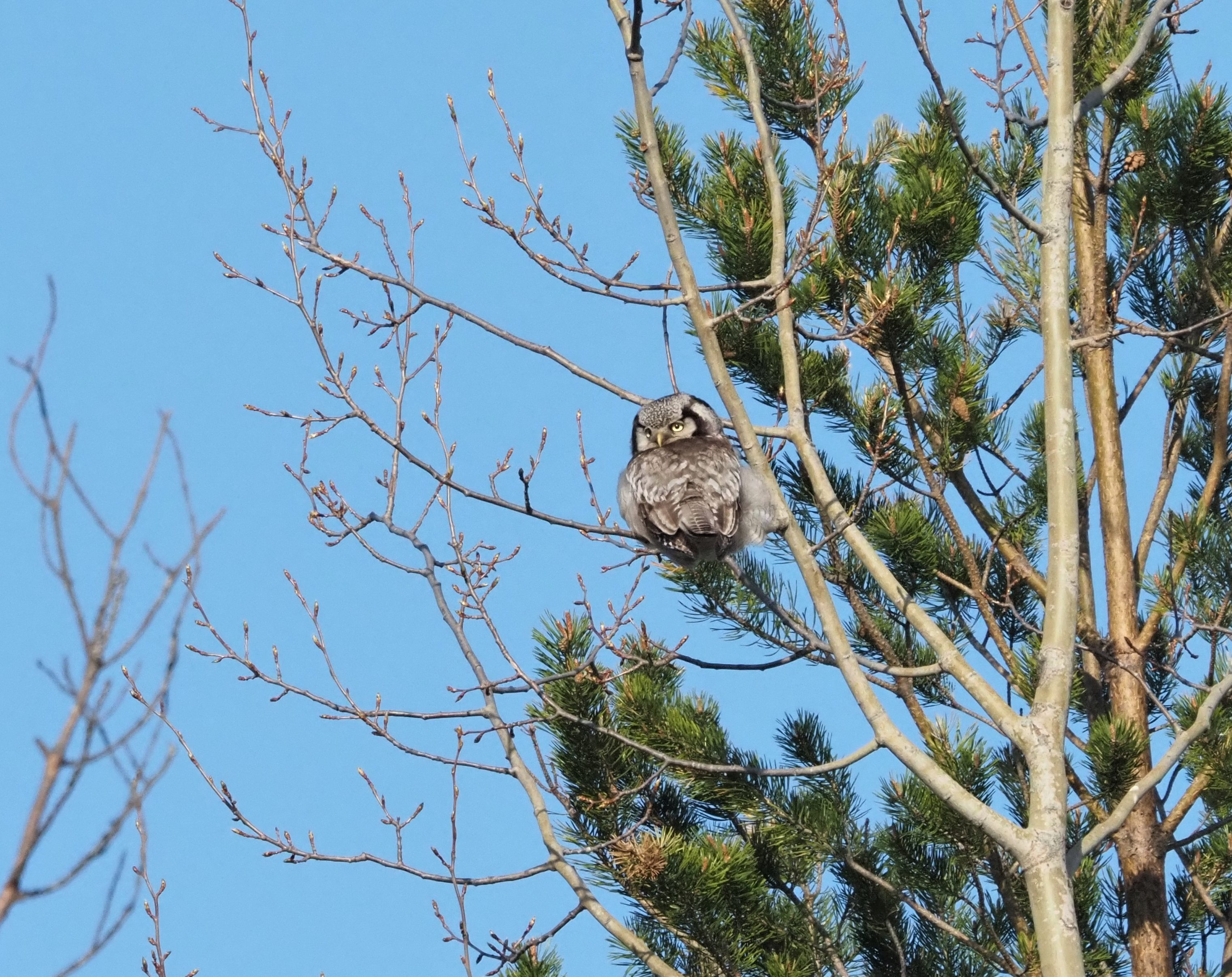




Day 5. Another early start to explore some of the hills around Kuusamo. Our first stop was devoted to explore Valatavaara, where it was going on a mountain race. Bird activity was quite low, but when arrived to the summit we had good views on a singing Common Cuckoo + Common Redstart and Dunnock. It didn’t take long before we contacted with the our first Three-toed Woodpecker that gave us excellent views while calling and moving up in a dead tree. Besides, a Great Spotted Woodpecker was also calling, and it was interesting to compare the calls of both species. Our walk kept going, adding lovely views on Tree Pipits and Spotted Flycatchers. A bit more of time was required to find a pair of Siberian Jays that, after moving quite high in the trees for a while, finally decided to come down. At some point, we had only a few meters away! Moving around the area we had a second Three-toed Woodpecker working the wood, but went away quite fast and not everybody in the group saw it. We still listened them drumming and calling several times! After a good pair of hours, it was quite clear that we were not going to have any Bluetail at Valtavaara so we decided to move away from here to try a second spot. After some breakfast, we drove the short distance and went to explore another section of boreal forest. We again enjoyed of the views above the endless forest that covers this region of Finland. And here we had more luck, and we listened a male Red-flanked Bluetail singing from the top of a distant spruce. The effort was worth it, especially when the bird moved into a different spruce where it caught the wonderful morning light! There we had 20 minutes to enjoy the bird, while a second Bluetail was singing around us.
Once everyone was satisfied with the views on these wonderful Bluetails, we came down the hill. Including a pair of stops for lunch and coffee, we had some solid drive North to the area around Ivalo.




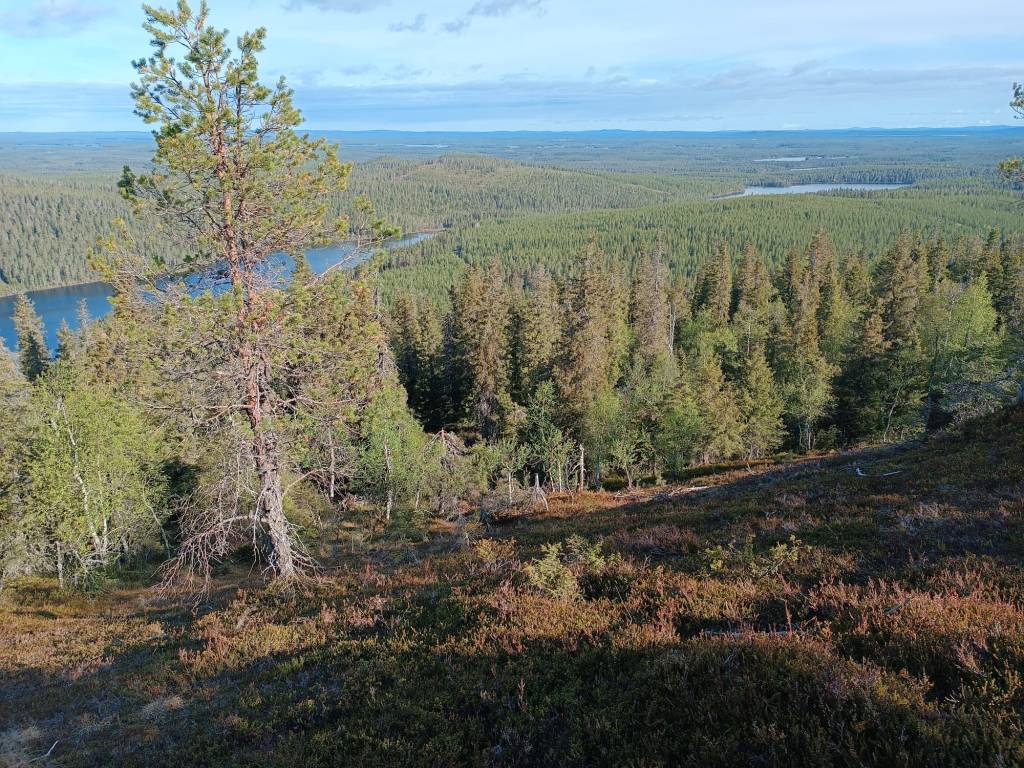
We were already inside Lapland and the North Polar Circle. Here, extensive boreal forests can be found all around. Before covering the short distance to our accommodation in the area we spent an hour and so in a lovely corner. In teh way, more Willow Grouses were visible along with Black Grouses. A pair of stops in selected places produced lovely views on obliging Siberian Tit, a highly appreciated speciality in this trip. Along with it we scanned the several Common Crossbill around in search for something different. Three-toed Woodpeckers were also active, and we could listen them drumming and had a glimpse in one of them while moving in the forest.
After this we just drove to our accommodation for some rest and a good evening meal!


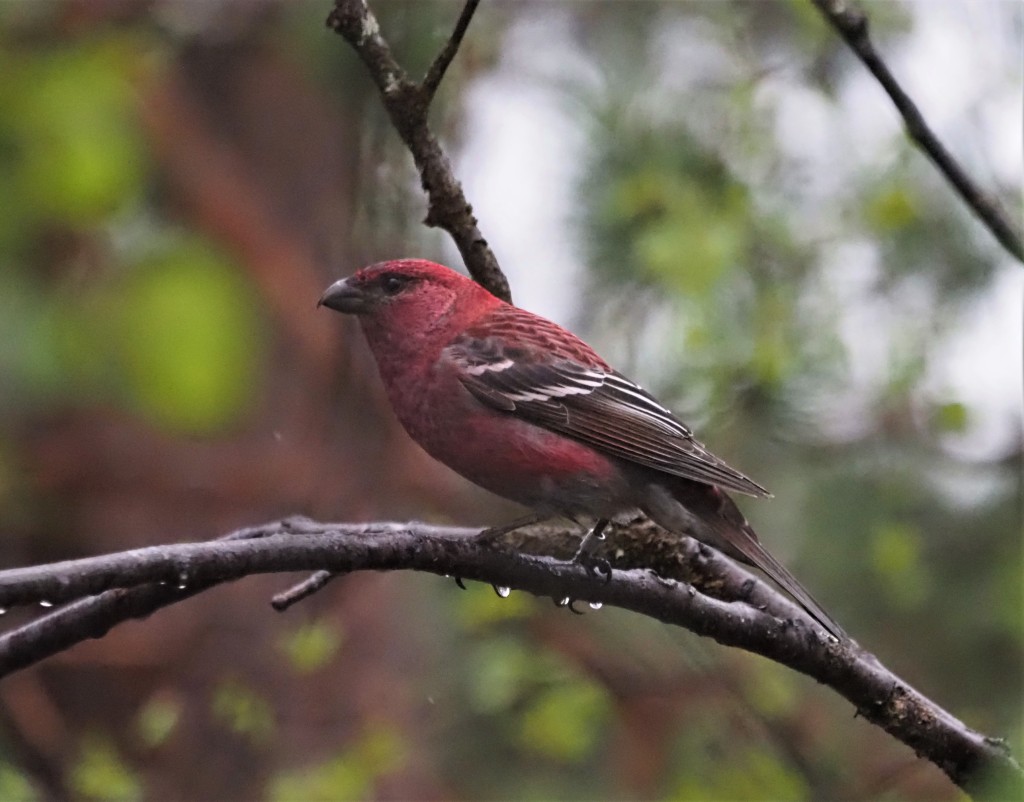
Day 6. A rainy day this morning, so an excellent chance to enjoy our the amazing buffet breakfast in our hotel at Ivalo. After breakfast we transfer North, with a mandatory stop in a popular coffee stop to enjoy the amazing Pine Grosbeak that attend the feeding station nearby. Here we also had good views on drake Bramblings but also Common Redpolls, Greenfinches, several Red Squirrels and a Waxwing that showed up just when we were leaving the coffee shop.
The day was wet and cold, but a pair of stops still produced the first Bluethroat of the trip along with Siberian Jay crossing the road. Here is where, stopping by the road, we had one of the best moments of trip. A walk inside a woodland of low willows allowed good views on Arctic Redpolls. It was dropping and the display of two displaying Common Snipes arrived to us from the nearby boj when a call came from inside the forest. A fast scanning in the area revealed not less than a Northern Hawk Owl that was hatching in a nest box, only a few meters away from the path! After some minutes of excitement the call came again from inside the forest, and it was not coming from the nest box. It was obvious that the male was around. A bit of scanning and exploring the forest was necessary before we found the male perched up in a tree. It was extremely quiet, only 15 metres away from us. Actually, it was so chill out that, at some point, it decided to fly down from the tree to stop only 10 metres away from us, in the top of a dead and broken willow. There, under the light rain, we got one of the most amazing sights of all the tours that we have had in Finland! Some were taking photos, while some participants just decided to sit down and enjoy the moment.. After 20 unforgettable minutes we decided to move away, back to minibus. The male still on its trunk, the female hatching. Without doubt one of my best experiences in the taiga, so far!

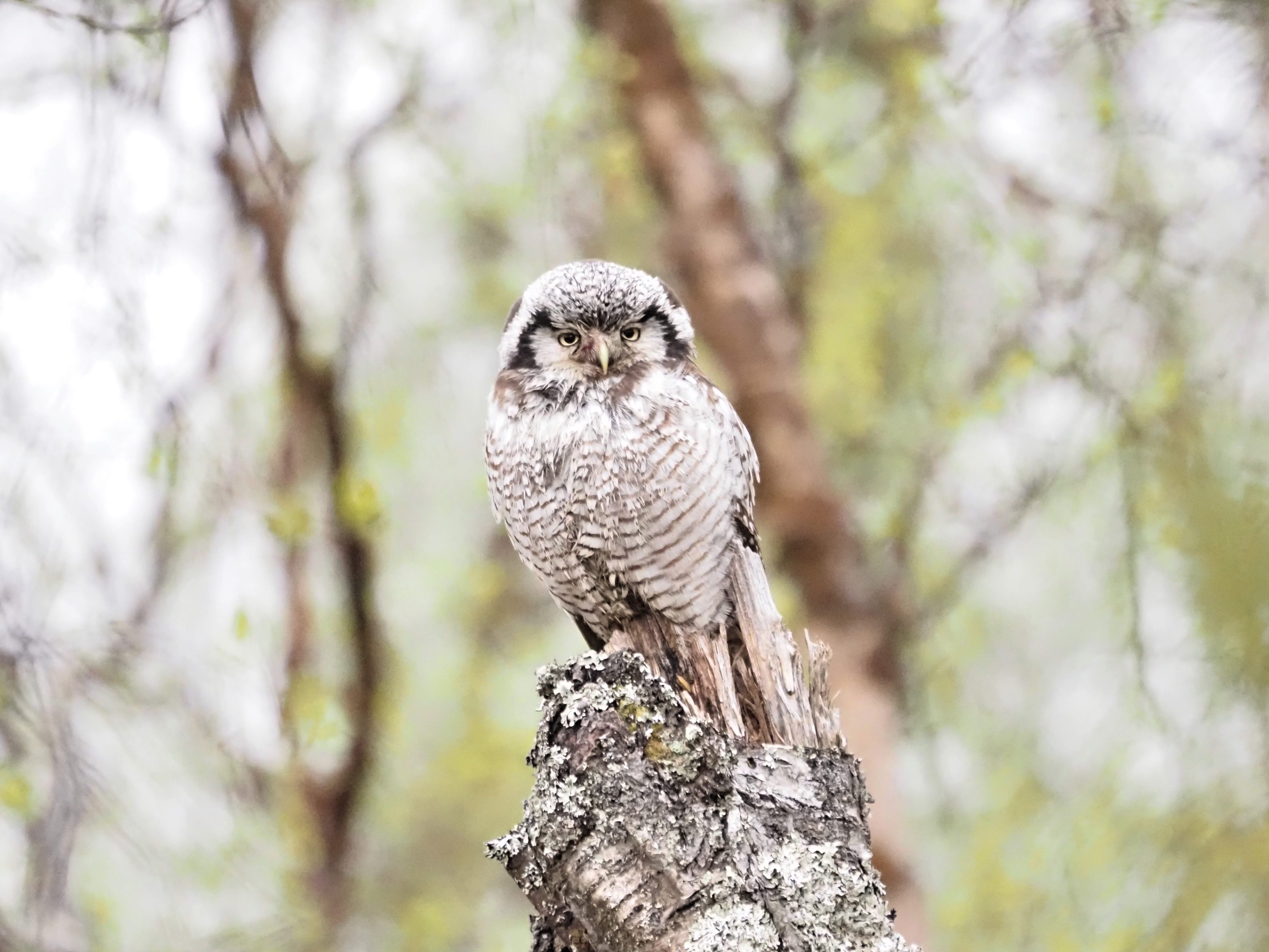

Back to the van, we all honestly needed some time to recover from this amazing experience, and later on we kept moving North, still with the ecos of the very low calls of the male in our heads. After a lunch stop, we arrived in Varanger by early afternoon. In our way we had several White-tailed Eagles moving along the coast line, and a good number of Rough-legged Buzzards looking for boles all along the road.
The coast along Varanger is a truly paradise for wildlife, and this unspoiled landscape is till preserving good densities of a long list of birds nesting all along its tundra and boj. A fast stop road allowed us to enjoy the first Kittiwakes of the trip, but also Dunlin, Temminck’s Stints, Redshanks, Bar-tailed Godwit and Ruddy Turstone.
The first proper stop in the fjord could no be better. As always there were several Goosanders, Red-breasted Mergansers and tens of Common Eiders along with many waders. We knew that some Steller’s Eiders were around, and Mark found them after a proper scan of the shore! There were two 2nd year males and one female. No bright colours then for the group (not yet) but still Steller’s Eiders!
Walking the short distance until an advantaged point, we enjoyed very long views on the birds as they moved a bit in the shore, being moved sometimes by the much larger Common Eiders. Here we also had the first Purple Sandpiper of the trip and Eurasian Whimbrel.
After we found the most important items of the afternoon, we went to enjoy of the many Phalarope ponds that are in this area to end our day with the amazing experience of 20 of this Nordic gems feeding only a few meters away from us. They arrived to their nesting grounds only a few days before, and they were extremely busy feeding on insects to recover from the long journey. They were all very excited, and we saw at least three different mating during the hour and so that we were there.


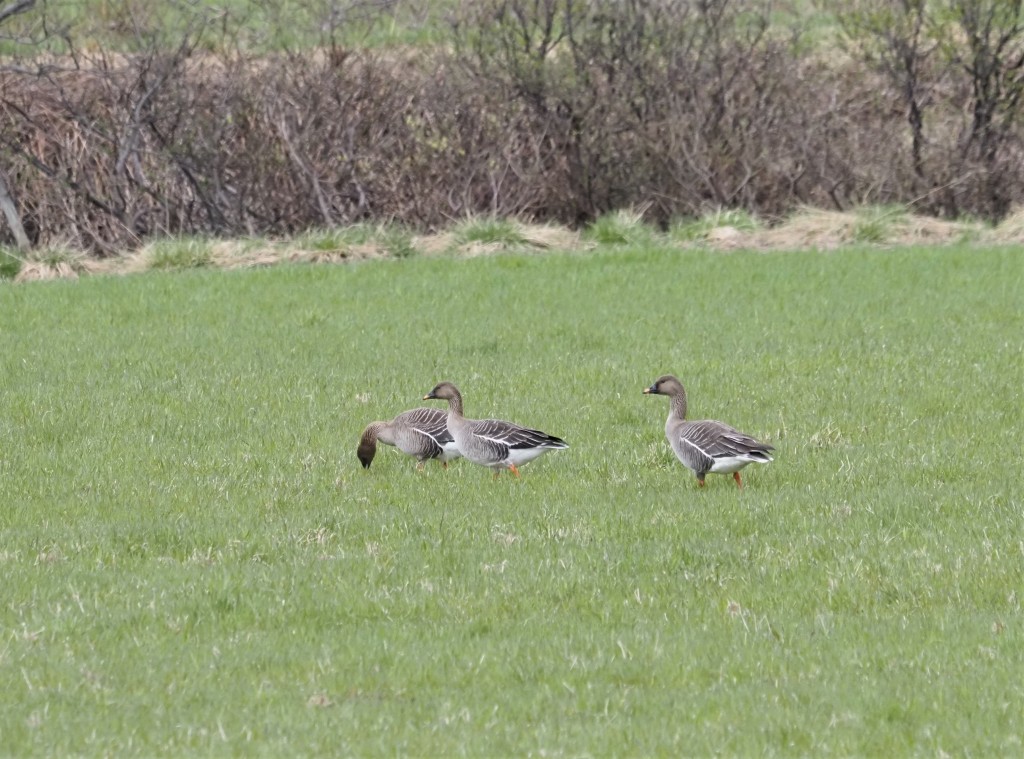
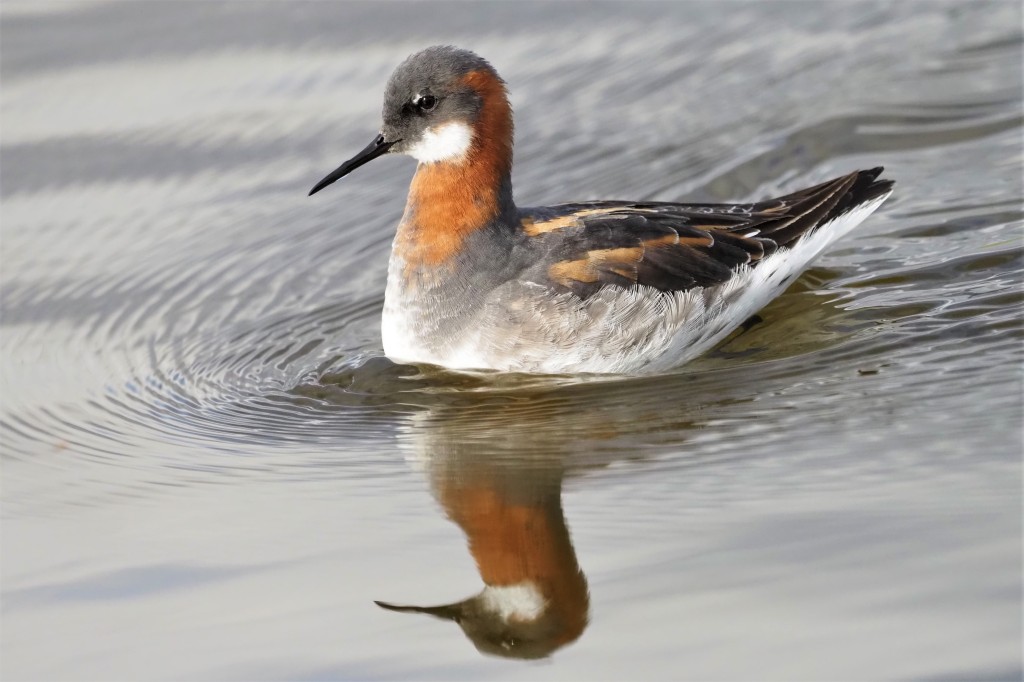

Day 7. A cloudy and fresh day, a nice weather to explore the Arctic landscapes with small windows of sun and with only a few drops of rain during the day. After breakfast we drove North to check one of the many bays along the coast in Varanger. But before we had a stop when crossing Vadso, since 3 Steller’s Eiders (the same three birds of the previous afternoon?) were feeding close to the shore along with Common Eiders. Here really improve the views on them as well as enjoying 30 Purple Sandpipers in the rocks.
Our first proper stop didn’t produce so much. Here there were recent reports of close views on a White-billed Diver, but we couldn’t find it. Still, the spot allowed us to connect with the firsts Long-tailed Ducks, Guillemots, Black Guillemots and Red-throated Divers of the trip, all of them common birds along this coast.
From here we drove to Vardo and wait for the boat connecting with Hornoya. After some waiting, we finally got the boat and cover the short distance out the bay of Vardo before arriving by the massive cliffs of the island.
Hornoya is the Easternmost point in Norway and hosts one of the most amazing seabird colony in Europe. Between March and July, the island concentrates between 150,000 and 180,000 sea birds, depending on the year. About 75,000 pairs of birds nest here including 40,000 pairs of Common Guillemots, 8,000 of Atlantic Puffin and about 5,000 of Brünnich’s Guillemot! Both the ambient of the colony, the extremely loud noise plus the incredible density of birds on its cliffs are not easy to forget for any visitor!
We landed in the island, and it was not long before we had the firsts Brünnich’s nesting up the in cliff. Small pockets of them can be found, always surrounded and outnumbered by Common Guillemots (including several from the smart Bridled form) and Razorbills.
Atlantic Puffins were everywhere in the lowest areas, and Shags and Kittiwakes were taking advantage of every single cavity, terrace or even bank, to nest on. The walk around the island also produced both Meadow & Red-throated Pipit, Bluethroat, Twite Arctic Skua, Barnacle & Greylag Geese, Rock Pipits, Goosanders and, of course, Redwings.
A bit of seawatching produced a few Atlantic Gannets going North and the first of a bunch of whales; a Minke Whale.


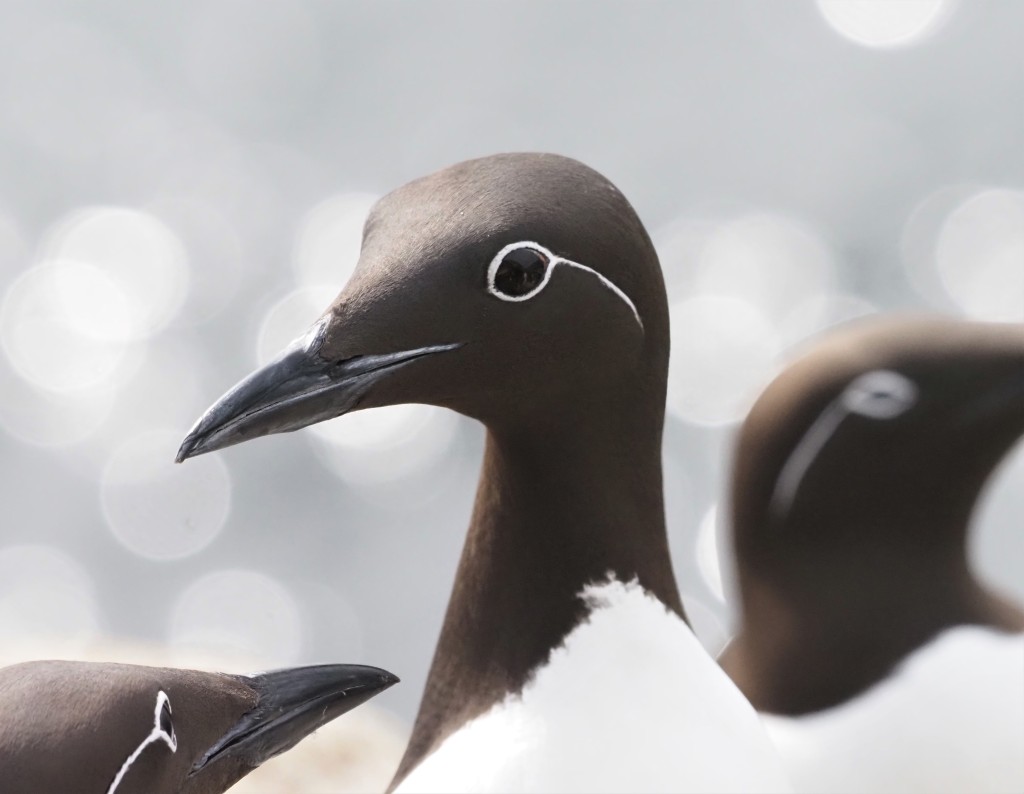


From Hornoya we kept moving North, stopping in the tundra to search for some species we fastly connect with some wonderful Lapland Buntings in full summer plomage and the very firsts Ruff lekking in short grass while both European Golden Plovers and Arctic Skuas were also ready to nest around.
Soon, the lane stick to the shore and several flocks of Goosanders start to appear. Here, Mark sharply spotted a number of whales. Most of them turned out to be Fin Whales, but a at least two of them were Humpback Whales! After some good views on them we kept driving North, but soon we had to stop again: a drake White-billed Diver was really close to the coast, offering great looks to all the tour participants. This is a good time of year to try to see them, as they are migrating North (!) to arrive to their nesting sites. Depending on the year, one or two non-breeding birds may stay in the area!
While scanning the harbour, another 2 White-billed Divers (one of them a 2nd year bird) were found, as well as a 6 Red-throated Divers, several flocks of Long-tailed Ducks and 2 Grey Seals. From here, we started a slow way back enjoying some views on Willow Grouse, Twite and more whales!
Back around Vardo, we still had two more stops in the way back to the accommodation. The first as 4 Pink-footed Geese were feeding nearby the road, and the second stop because of 2 wonderful Short-eared Owls that were chasing each other over the farmland next to the road. Here we were specially lucky as one of them just decided to stop next to our minibus, allowing us to capture some incredible image. Definately not a bad way to end our day!







Day 8. A pre-dawn walk produced nice views on the typical coastal birds around our accommodation, and Mark Newsome had a full adult Heuglin’s Gull (currently considered as a race of Lesser black-backed Gull), a quite unexpected species in this area!
This day we transfered to the inner Varanger, where the tundra becomes a wonderful carpet that covers the whole plateau, with plenty of rocky outcrops, lakes and deep valleys that mark the distribution of the many goodies nesting here.
But before we had a small stop South of Ekrenoy, where a French gentleman had a drake Steller’s Eider the day before. At the first attemp Carmine had a small flock of 4 Steller’s Eider appearing from behind some rock, and there was our wonderful drake male offering some wonderful views while feeding along with 3 females! The birds kept coming closer and closer, and the rather intimates views paid off the time that we spent waiting for them in the rather cold ambient.
From here we drove all the way to the central plateau in Varanger, where a first stop produced the first views on lovely Long-tailed Skuas, several Arctic Redpolls and good views on the very splendid Bluethroats nesting in the area. From here we went to check a number of spots where the very sought after GyrFalcon is likely to appear. In our second stop, we found a pair of these massive falcons in a small cliff showing clear nesting signs.
We had scope views on both the male and the female while resting in the cliffs. At some point, the male flew off, circling in the sky to powerfully fly into the cliffs, probably in the chase of any potential prey.







After this incredible sight we kept exploring the tundra, adding close views on Black-throated & Red-throated Diver to our list. Red-throated Pipits were singing around and a pair of Shore Larks was found feeding along one of the lanes. In the roocky outcrops, we enjoyed up to 4 Rock Ptarmigans showing out its white plomage. We even had some display flights, and their rocky calls contrasted with the happy display songs of both European Golden Plovers and Dunlins that full filled the ambient. Some Snow Buntings were also noted, but only a female provided the group with more or less close views. Just the opposite from Lapland Buntings, that looked like being as common as ever, with some males walking really close to the prominent Long-tailed Skua nests.
At the end of the afternoon, we got a pair of Rough-legged Buzzards hunting by one of the lanes, providing great views and the day ended with some scanning of large gulls in the search of any scarcity, and with some Willow Grouse by the lane before arriving to our accommodation.


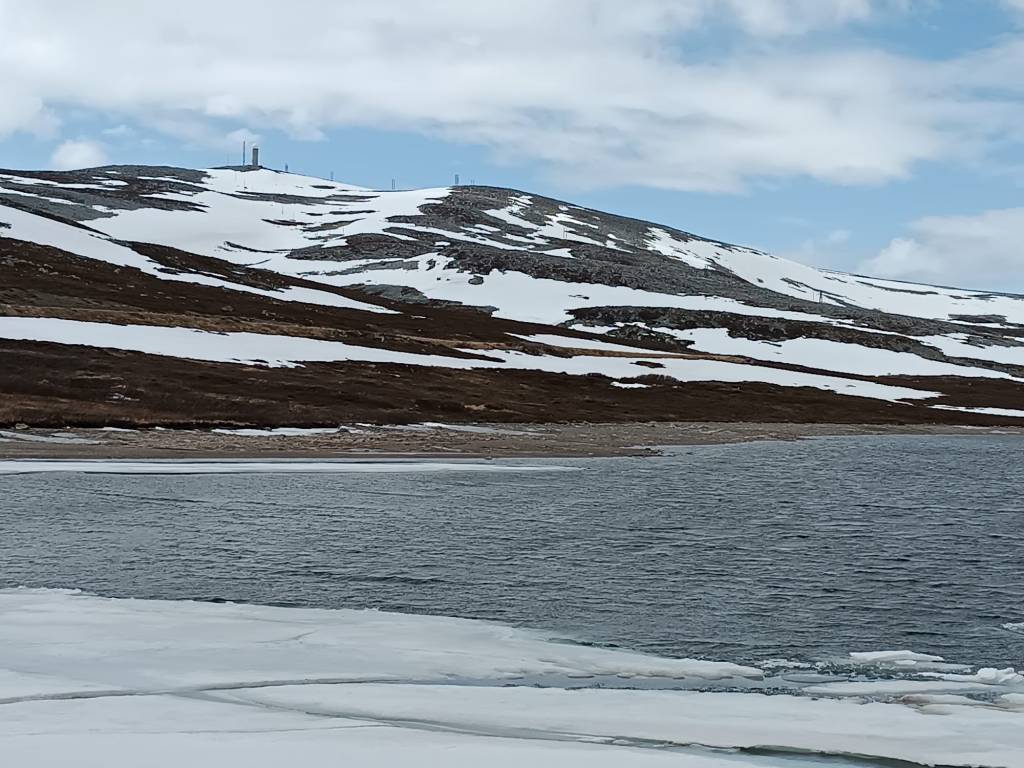
Day 9. During the morning we explored a bit further the tundra, adding better views on Snow Finch, Long-tailed Skuas, Red-throated Pipits, as well as enjoying with the display and close views on Red-throated Divers, Ruff and Scaups. We spent some time in a small stream where in previous years we had Dipper, but we failed to find any of the. For instance, the only one Peregrine Falcon of the tour appeared in the gorge. Back to the tundra, we had 2 Bar-tailed Godwits flying low over the area, an interesting sight since they are not supposed to nest here. At midday we started the transfer back South, and we spent the rainy afternoon in our accommodation.
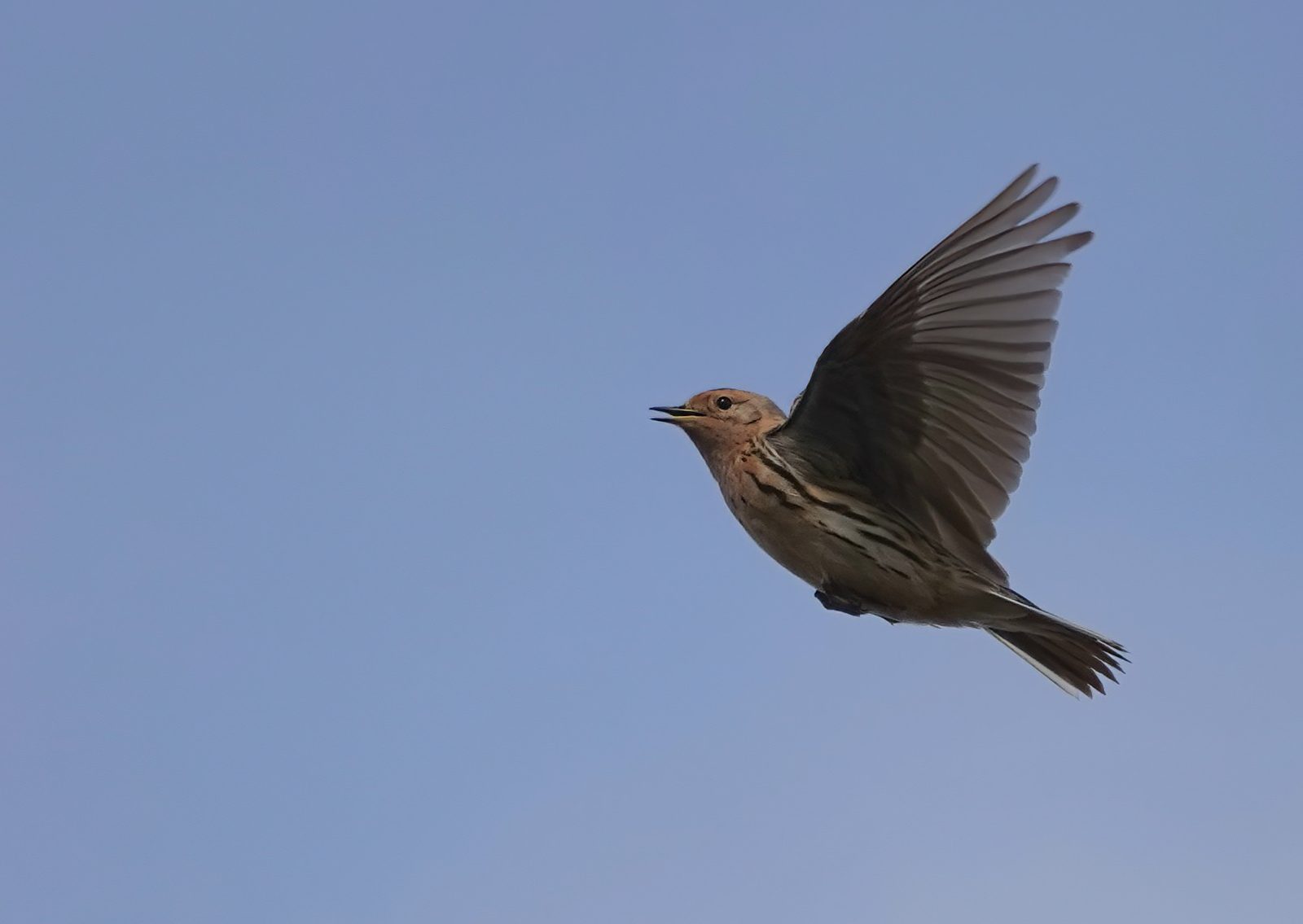
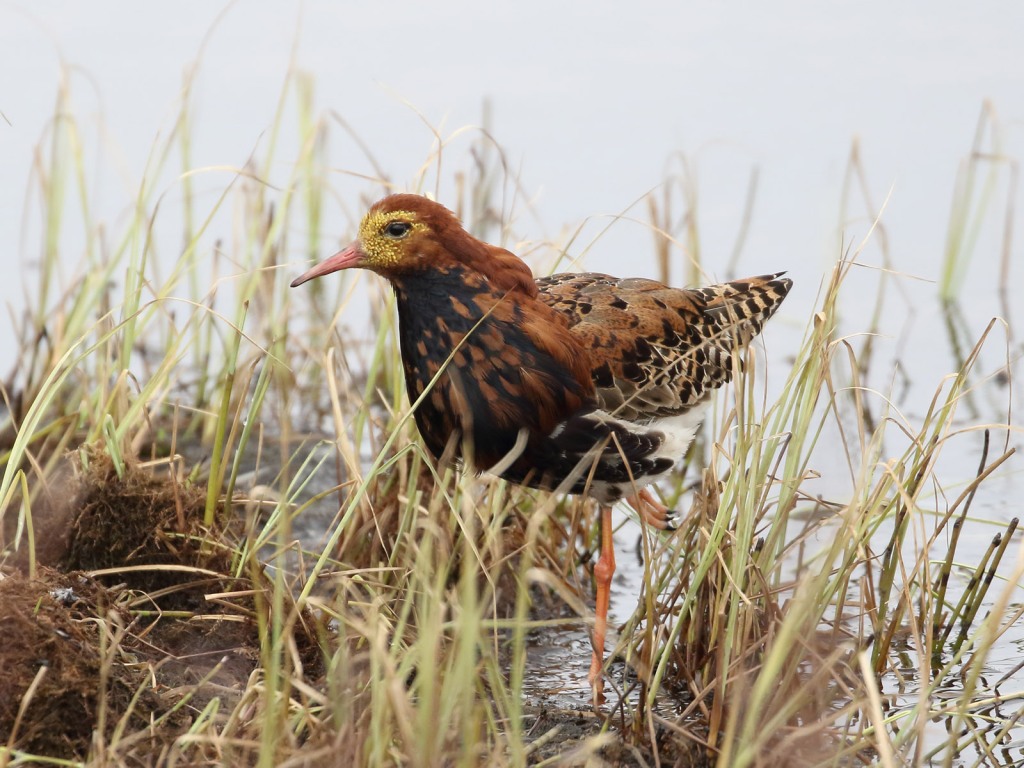
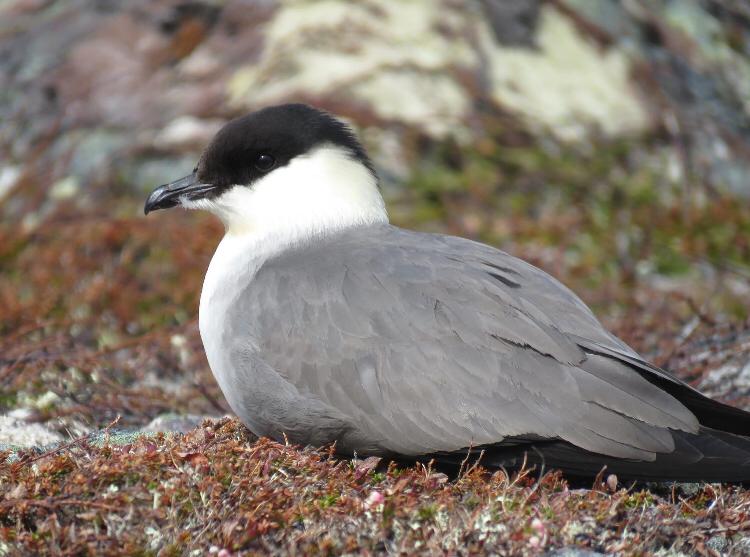

Day 10. This day we took advantage of our midday flight to have a last am in proper boreal forest. Unfortunately we had a cold morning with a heavy snow fall. It was actually the first snow fall ever in this trip. Still, we had a good pair of hours, and a nice short walk in the forest produced several Common Crossbills, a feeding pair of Bohemian Waxwings and a nice male Parrot Crossbill that showed quite properly in the top of a spruce along with several Bramblings, Mealy Redpolls and Eurasian Siskins.
The drive around this spot South of Ivalo produced also a minimum of 7 Black Grouses, including 6 males moving together and a female Western Caspercaillie nicely flying beside the minibus and showing the lovely peachy patch on its breast.
After a pair of hours of birding we went to enjoy a coffee and some food before heading to airport while the landscape was being covered by a massive snow fall! Without doubt, a great way to end our 2023 trip in Finland!
In 2024 we will be back in Finland. Please check dates and prices at our website: http://www.barcelonabirdingpoint.com
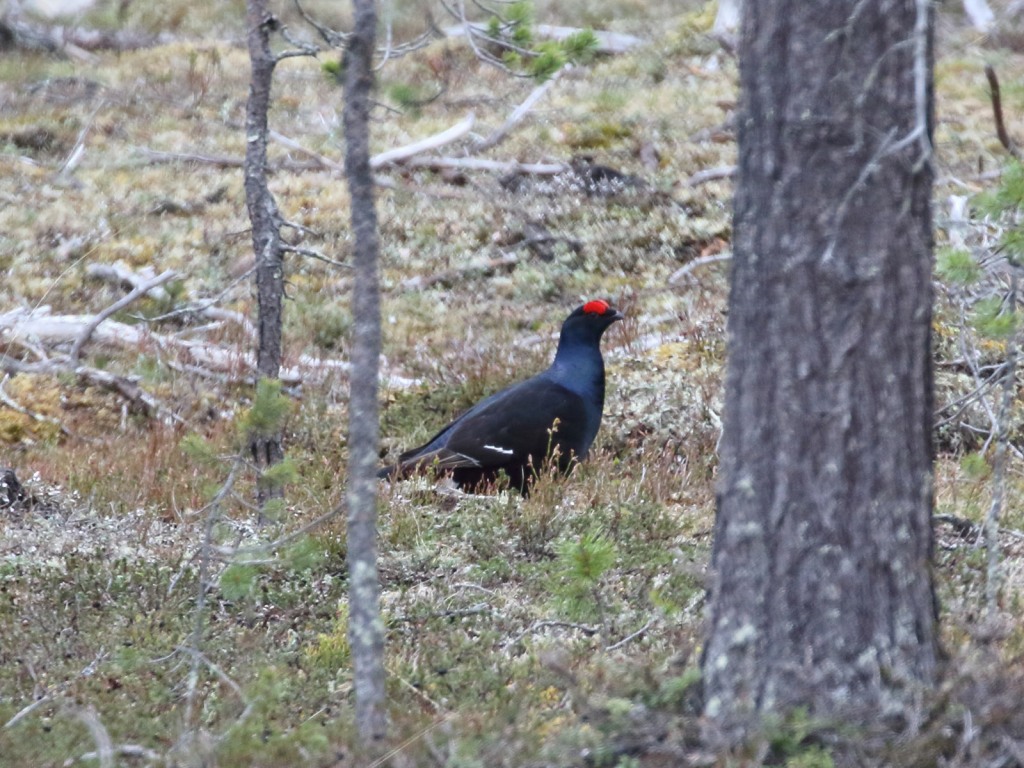

List of birds seen during the trip:
- Red-throated Diver (Gavia stellata)
- Black-throated Diver (Gavia arctica)
- Yellow-billed Diver (Gavia adamsii)
- Great Crested Grebe (Podiceps cristatus)
- Red-necked Grebe (Podiceps grisegena)
- Slavonian Grebe (Podiceps auritus)
- Atlantic Gannet (Morus bassanus)
- Great Cormorant (Phalacrocorax carbo)
- Atlantic Shag (Phalacrocorax aristotelis)
- Great White Egret (Casmerodius albus)
- Whooper Swan (Cygnus cygnus)
- Mute Swan (Cygnus olor)
- Common Shelduck (Tadorna tadorna)
- Greylag Goose (Anser anser)
- Tundra Bean Goose (Anser serrirostris)
- Taiga Bean Goose (Anser fabalis)
- Pink-footed Goose (Anser brachyrhynchus)
- Barnacle Goose (Branta leucopsis)
- Eurasian Wigeon (Mareca penelope)
- Gadwall (Mareca strepera)
- Eurasian Teal (Anas crecca)
- Mallard (Anas platyrhynchos)
- Pintail (Anas acuta)
- Northern Shoveler (Spatula clypeata)
- Garganey (Spatula querquedula)
- Tufted Duck (Aythya fuligula)
- Greater Scaup (Aythya marila)
- Common Eider (Somateria mollissima)
- Steller’s Eider (Polysticta stelleri)
- Long-tailed Duck (Clangula hyemalis)
- Common Scoter (Melanitta nigra)
- Goldeneye (Bucephala clangula)
- Smew (Merguellus albellus)
- Goosander (Mergus merganser)
- Red-breasted Merganser (Mergus serrator)
- Black Kite (Milvus migrans)
- Hen Harrier (Circus cyaneus)
- Western Marsh Harrier (Circus aeruginosus)
- Eurasian Sparrowhawk (Accipiter nisus)
- Northern Goshawk (Accipiter gentilis) — heard only
- Common Buzzard (Buteo buteo)
- Rough-legged Buzzard (Buteo lagopus)
- Osprey (Pandion haliaetos)
- White-tailed Eagle (Haliaeetus albicilla)
- Eurasian Kestrel (Falco tinnunculus)
- Eurasian Hobby (Falco subbuteo)
- Merlin (Falco columbarius)
- Peregrine Falcon (Falco peregrinus)
- Gyrfalcon (Falco rusticolus)
- Hazel Grouse (Tetrastes bonasa)
- Willow Grouse (Lagopus lagopus)
- Rock Ptarmigan (Lagopus mutus)
- Black Grouse (Lyrurus tetrix)
- Western Capercaillie (Tetrao urogallus)
- Common Crane (Grus grus)
- Eurasian Oystercatcher (Haematopus ostralegus)
- Common Ringed Plover (Charadrius hiaticula)
- Little Ringed Plover (Charadrius dubius) — heard only
- Eurasian Golden Plover (Charadrius apricaria)
- Northern Lapwing (Vanellus vanellus)
- Temminck’s Stint (Calidris temminckii)
- Little Stint (Calidris minuta)
- Red Knot (Calidris canutus)
- Purple Sandpiper (Calidris maritima)
- Ruff (Calidris pugnax)
- Broad-billed Sandpiper (Limicola falcinellus)
- Eurasian Woodcock (Scolopax rusticola)
- Common Snipe (Gallinago gallinago)
- Bar-tailed Godwit (Limosa lapponica)
- Black-tailed Godwit (Limosa limosa)
- Eurasian Whimbrel (Numenius phaeopus)
- Eurasian Curlew (Numenius arquata)
- Common Redshank (Tringa totanus)
- Greenshank (Tringa nebularia)
- Wood Sandpiper (Tringa glareola)
- Green Sandpiper (Tringa ochropus)
- Common Sandpiper (Actitis hypoleucos)
- Ruddy Turstone (Arenaria interpres)
- Red-necked Phalarope (Phalaropus lobatus)
- Arctic Skua (Stercorarius parasiticus)
- Long-tailed Skua (Stercorarius longicaudus)
- Little Gull (Hydrocoloeus minutus)
- Black-headed Gull (Chroicocephalus ridibundus)
- Common Gull (Larus canus)
- Great Black-backed Gull (Larus marinus)
- Herring Gull (Larus argentatus)
- Lesser Black-backed Gull (Larus fuscus)
- Kittiwake (Rissa tridactyla)
- Common Tern (Sterna hirundo)
- Arctic Tern (Sterna paradisaea)
- Little Tern (Sternula albifrons)
- Caspian Tern (Hydroprogne caspia)
- Guillemot (Uria aalge)
- Brünnich’s Guillemot (Uria lomvia)
- Razorbill (Alca torda)
- Black Guillemot (Cepphus grylle)
- Atlantic Puffin (Fratercula arctica)
- Feral Pigeon (Columba livia)
- Stock Dove (Columba oenas)
- Common Wood Pigeon (Columba palumbus)
- Common Cuckoo (Cuculus canorus)
- Short-eared Owl (Asio flammeus)
- Tengmalm’s Owl (Aegolius funereus)
- Great Grey Owl (Strix nebulosa)
- Ural Owl (Strix uralensis)
- Northern Hawk Owl (Surnia ulula)
- Common Swift (Apus apus)
- Great Spotted Woodpecker (Dendrocopos major)
- Three-toed Woodpecker (Picoides tridactylus)
- Black Woodpecker (Dryocopus martius)
- Grey-headed Woodpecker (Picus canus)
- Skylark (Alauda arvensis)
- Horned Lark (Eremophila alpestris)
- Barn Swallow (Hirundo rustica)
- Western House Martin (Delichon urbicum)
- Tree Pipit (Anthus trivialis)
- Meadow Pipit (Anthus pratensis)
- Red-throated Pipit (Anthus cervinus)
- Rock Pipit (Anthus petrosus)
- White Wagtail (Motacilla alba)
- Western Yellow Wagtail (Motacilla flava)
- Bohemian Waxwing (Bombycilla garrulus)
- Dunnock (Prunella modularis)
- Eurasian Robin (Erithacus rubecula)
- Bluethroat (Luscinia svecica)
- Red-flanked Bluetail (Tarsiger cyanurus)
- Common Redstart (Phoenicurus phoenicurus)
- Whinchat (Saxicola rubetra)
- Spotted Flycatcher (Muscicapa striata)
- European Pied Flycatcher (Ficedula hypoleuca)
- Northern Wheatear (Oenanthe oenanthe)
- Fieldfare (Turdus pilaris)
- Song Thrush (Turdus philomelos)
- Eurasian Redwing (Turdus iliacus)
- Mistle Thrush (Turdus viscivorus)
- Eurasian Blackbird (Turdus merula)
- Sedge Warbler (Acrocephalus schoenobaenus)
- Eurasian Blackcap (Sylvia atricapilla) — heard only
- Garden Warbler (Sylvia borin)
- Common Chiffchaff (Phylloscopus collybita)
- Willow Warbler (Phylloscopus troquillus)
- Wood Warbler (Phylloscopus sibilatrix)
- Goldcrest (Regulus regulus)
- Willow Tit (Poecile montanus)
- Siberian Tit (Poecile cinctus)
- Coal Tit (Periparus ater) — heard only
- Eurasian Crested Tit (Lophophanus cristatus)
- Blue Tit (Cyanistes caeruleus)
- Great Tit (Parus major)
- Eurasian Treecreeper (Certhia familiaris)
- Siberian Jay (Perisoreus infaustus)
- Eurasian Magpie (Pica pica)
- Western Jackdaw (Corvus monedula)
- Hooded Crow (Corvus cornix)
- Rook (Corvus frugilegus)
- Common Raven (Corvus corax)
- European Starling (Sturnus vulgaris)
- House Sparrow (Passer domesticus)
- Eurasian Tree Sparrow (Passer montanus)
- Common Chaffinch (Fringilla coelebs)
- Brambling (Fringilla montifringilla)
- Eurasian Greenfinch (Chloris chloris)
- Eurasian Siskin (Spinus spinus)
- Linnet (Carduelis cannabina)
- Mealy Redpoll (Carduelis flammea)
- Arctic Redpoll (Carduelis hornemanni)
- Common Crossbill (Loxia curvirostra)
- Parrot Crossbill (Loxia pytopsyttacus)
- Common Rosefinch (Carpodacus erythrinus)
- Eurasian Bullfinch (Pyrrhula pyrrhula)
- Pine Grosbeak (Pinicola enucleator)
- Yellowhammer (Emberiza citrinella)
- Ortolan Bunting (Emberiza hortulana)
- Reed Bunting (Emberiza schoeniclus)
- Rustic Bunting (Emberiza rustica)
- Little Bunting (Emberiza pusilla)
- Lapland Bunting (Calcarius lapponicus)
List of mammals seen during the trip:
- European Hare (Leppus leppus)
- Mountain Hare (Leppus timidus)
- Muskrat (Ondatra zibethicus)
- Red Squirrel (Sciurus vulgaris)
- European Hedgehog (Erinaceus europaeus)
- Stout (Mustela erminea)
- Red Fox (Vulpes vulpes)
- Grey Seal (Halichoerus grypus)
- Roe Deer (Capreolus capreolus)
- Moose (Alces alces)
- Reindeer (Rangifer tarandus)
- Fin Whale (Balaenoptera phisalus)
- Common Mink Whale (Balaenoptera acutorostrata)
- Humpback Whale (Megaptera novaeangliae)
- Harbour Porpoise (Phocoena phocoena)




